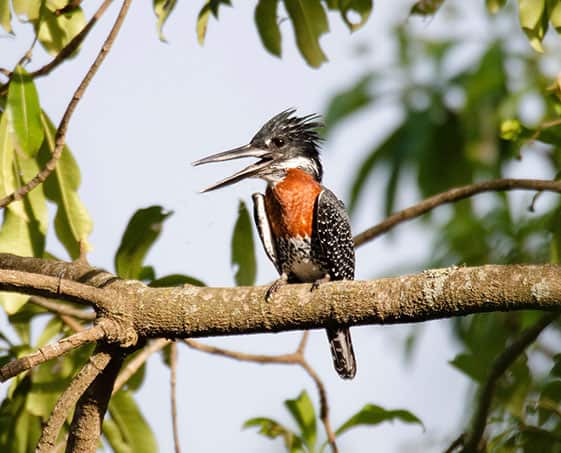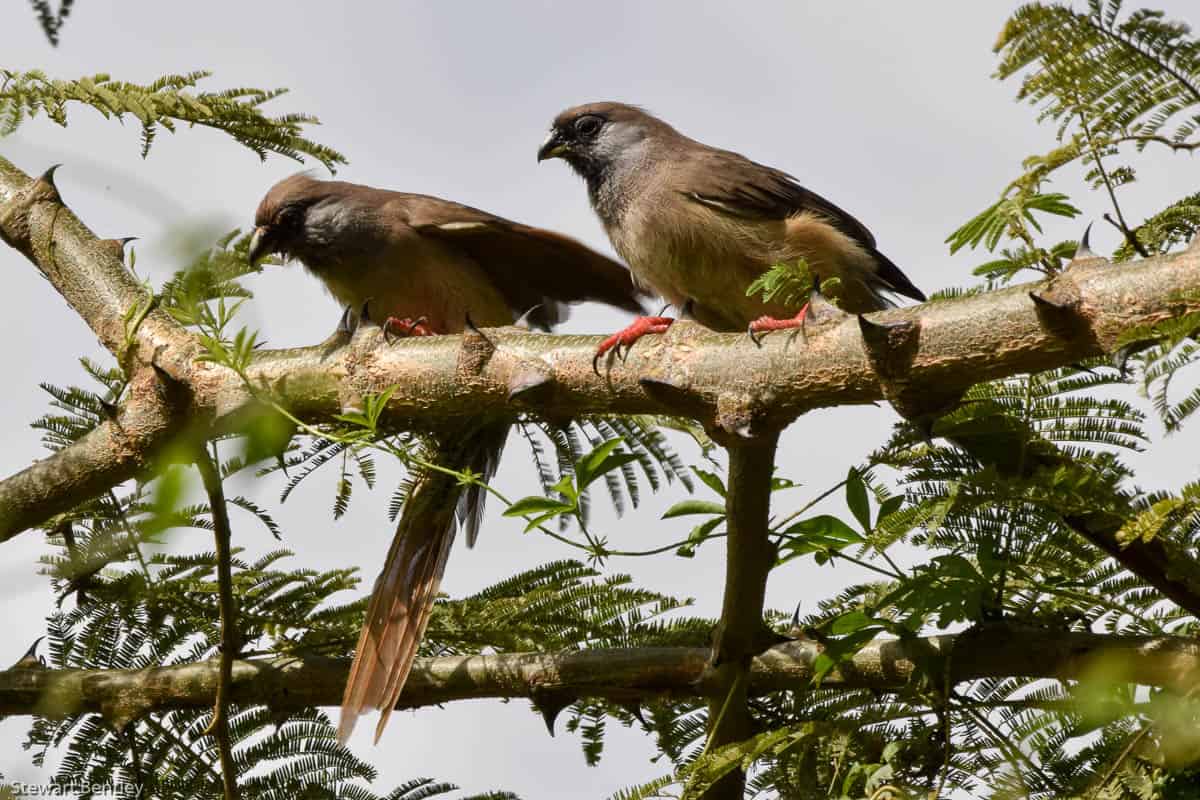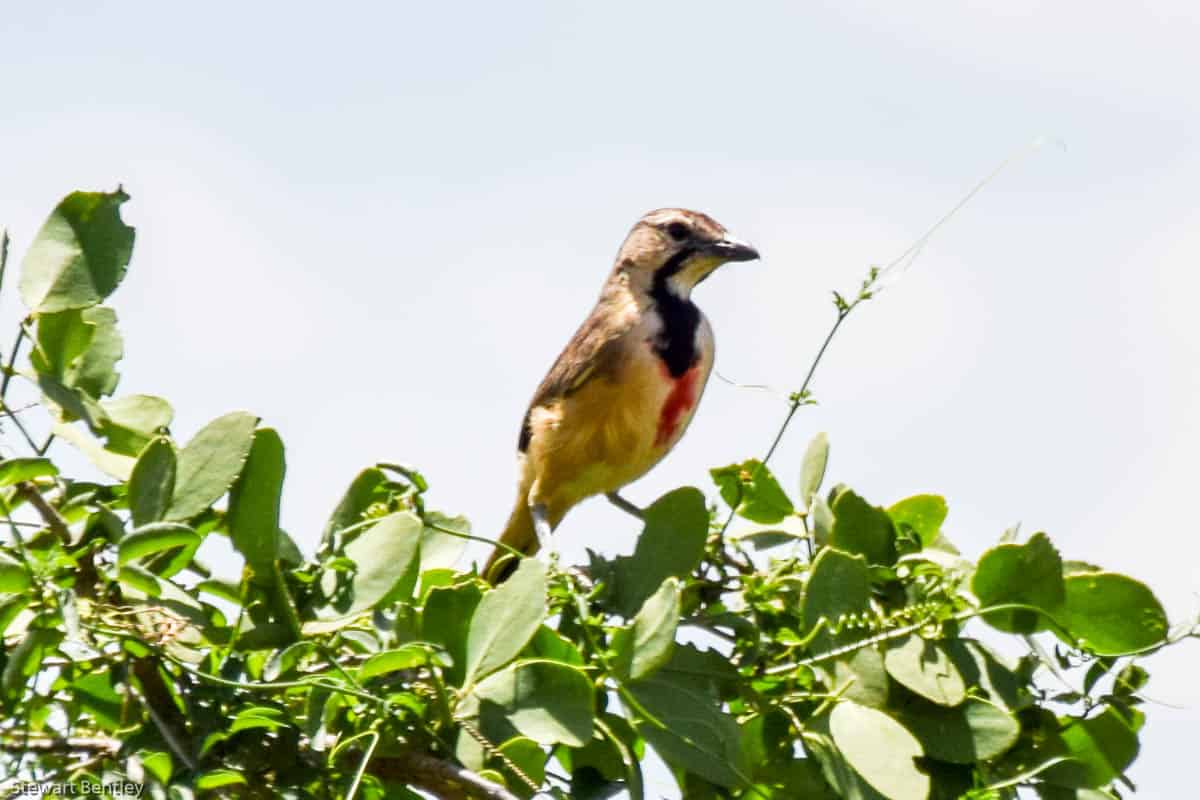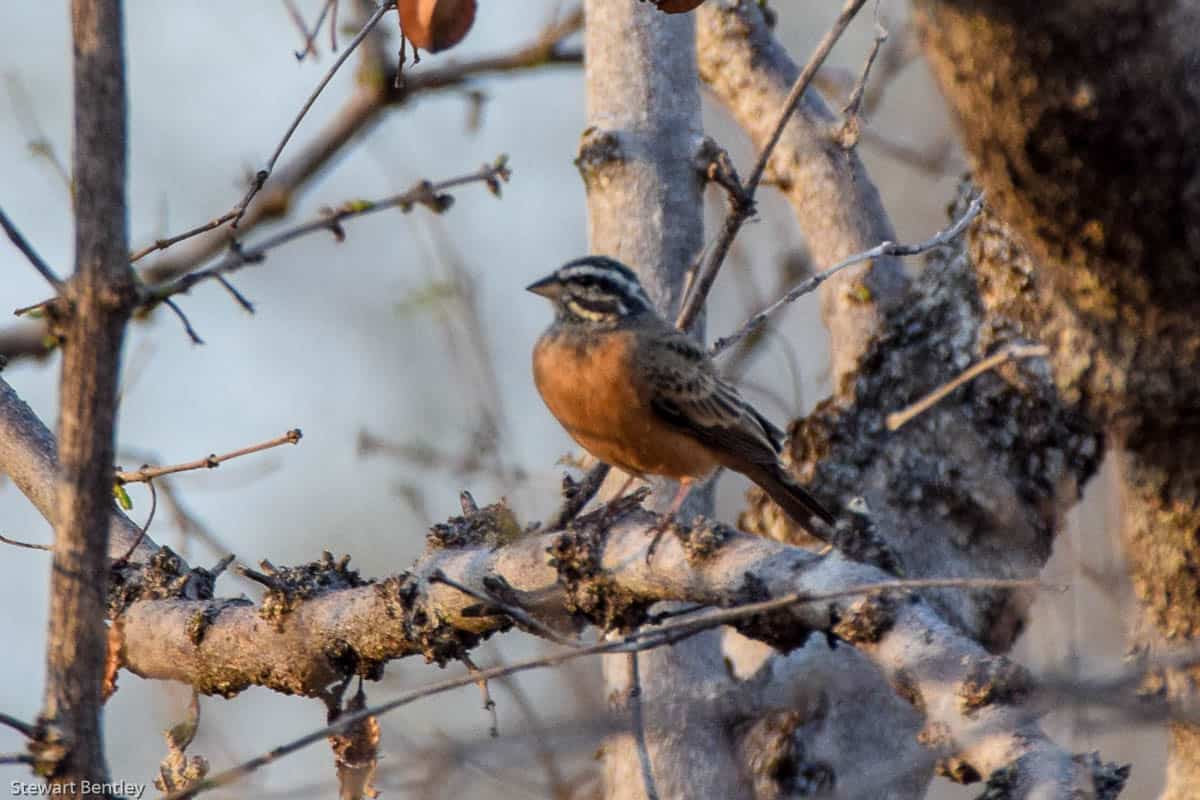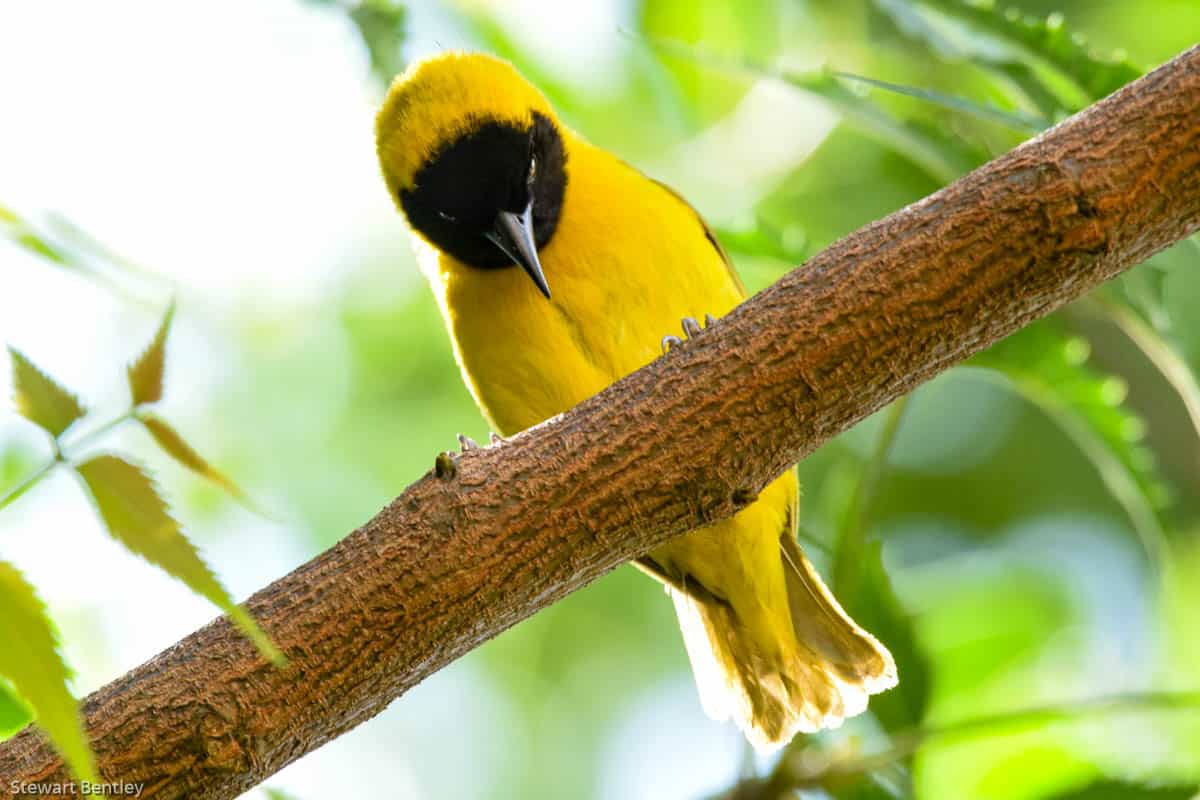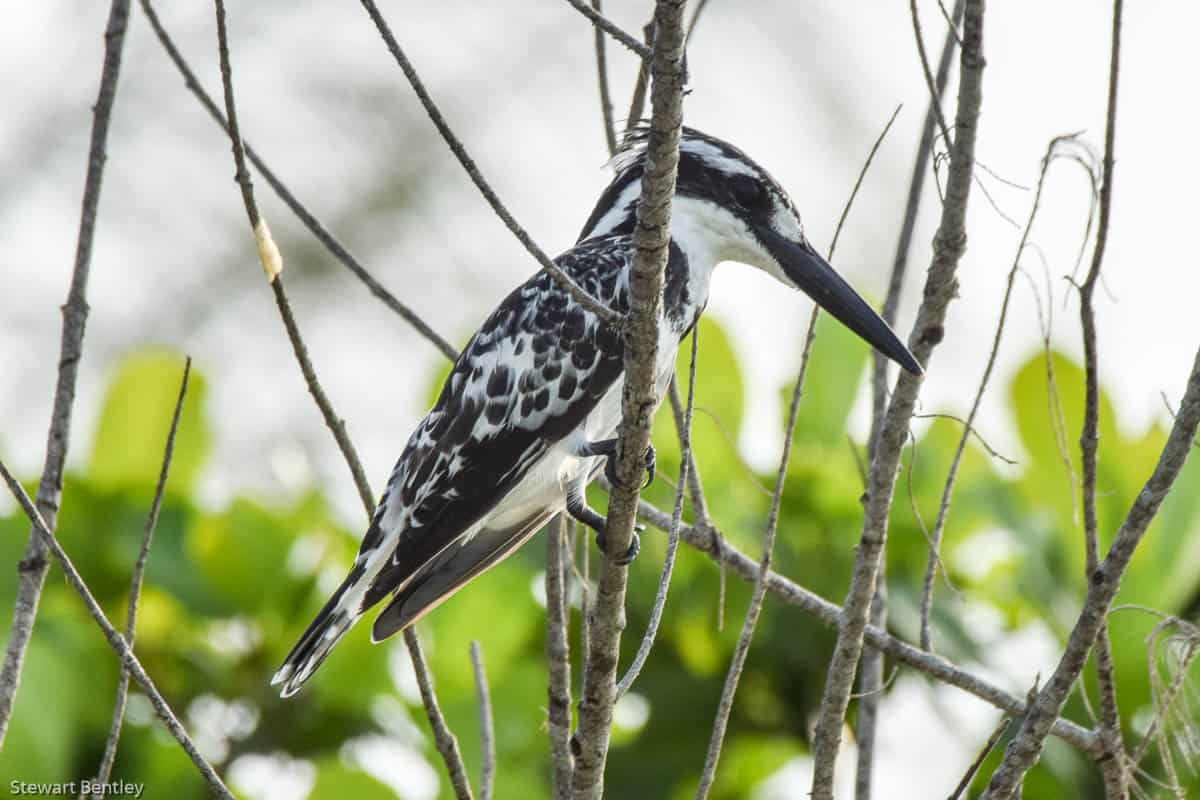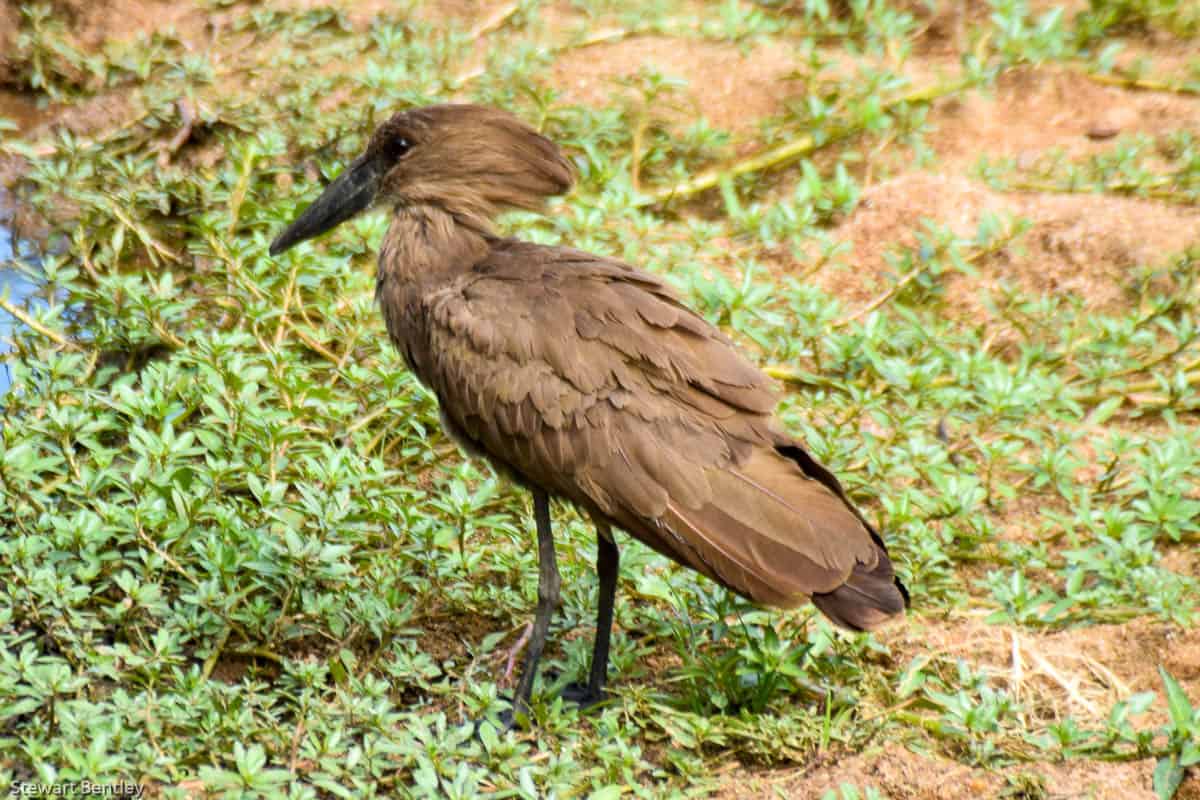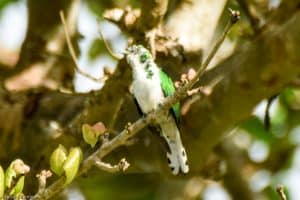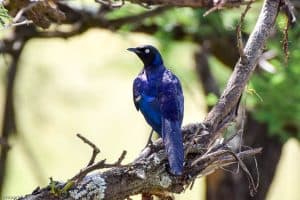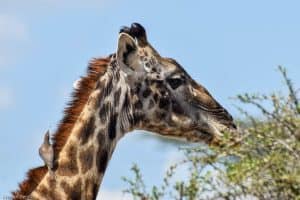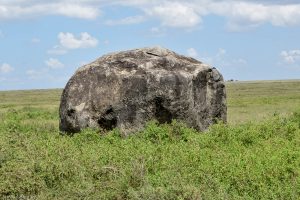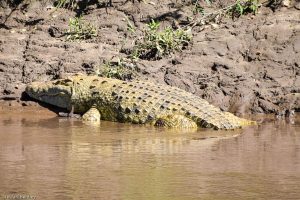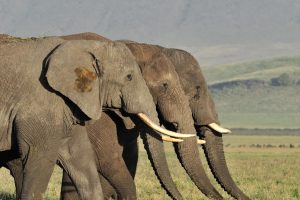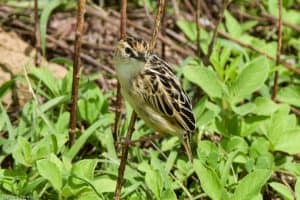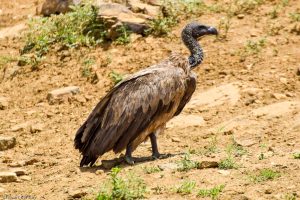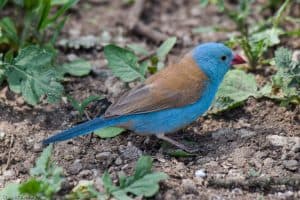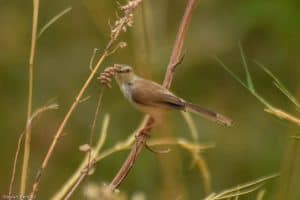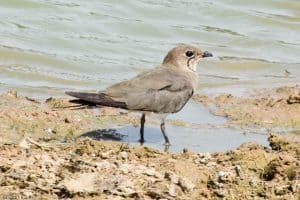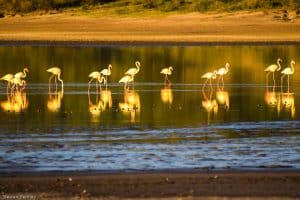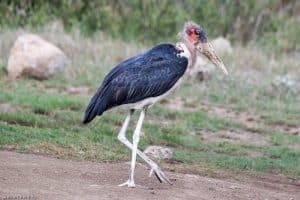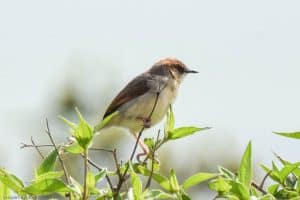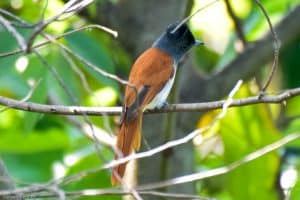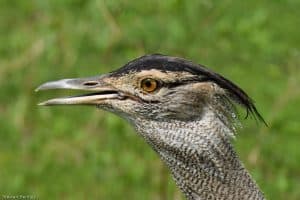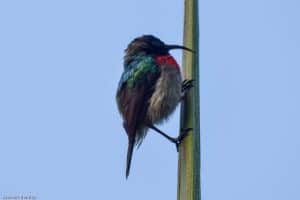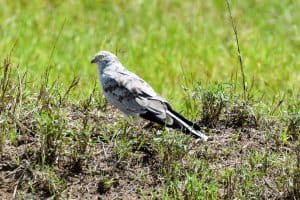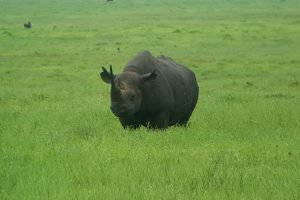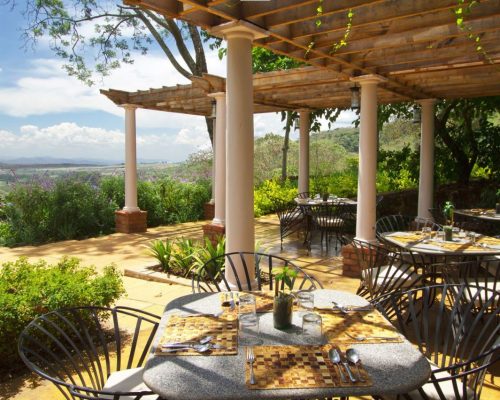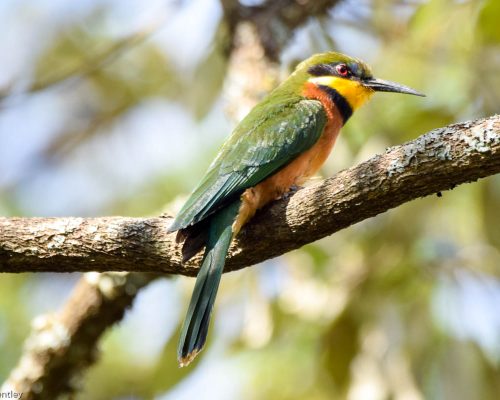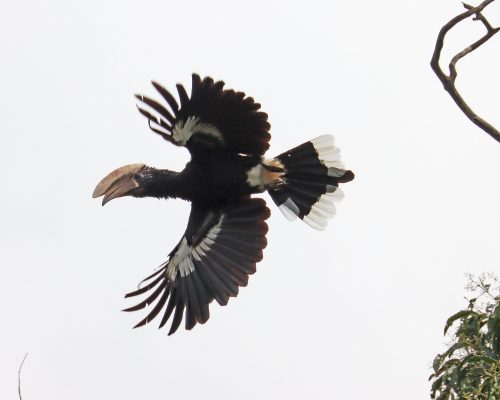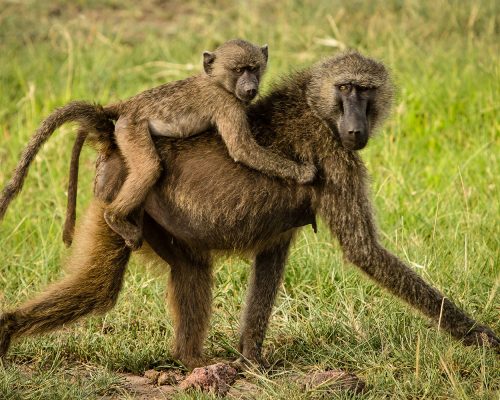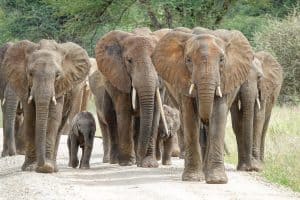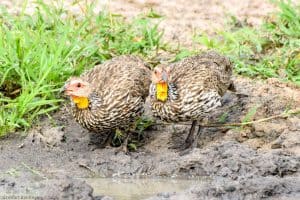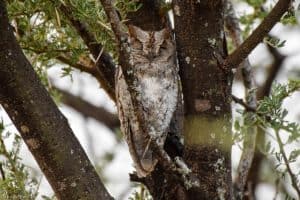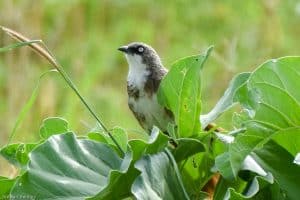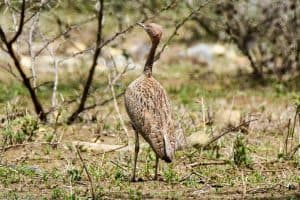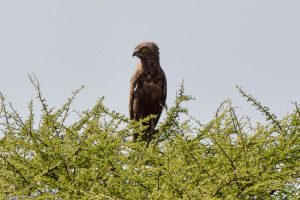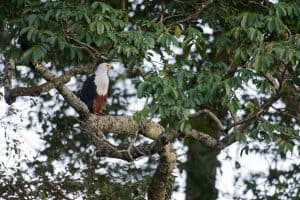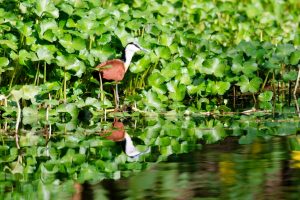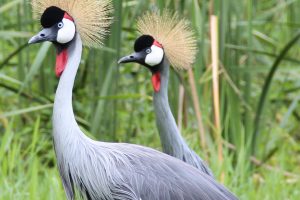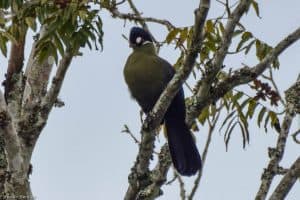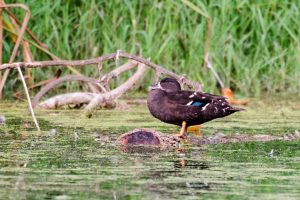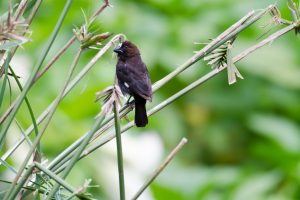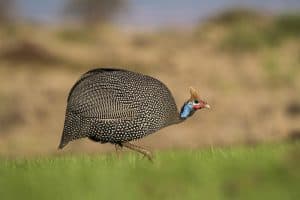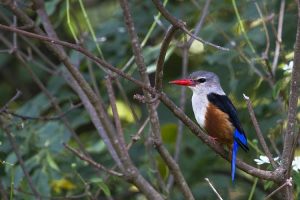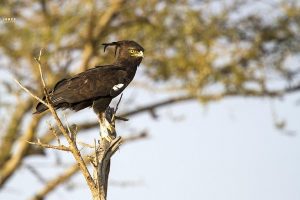STANDARD NORTHERN TANZANIA BIRDING
With Extension to West Kilimanjaro – Ndarakwai Private Ranch
THE GREATEST WILDLIFE SPECTACLE ON EARTH
Birding & Wildlife in the Serengeti, Ngorongoro Crater & Beyond
TOUR RUNNING AMIDST CLOSURE OF INTERNATIONAL BORDERS DUE TO THE COVID-19 PANDEMIC OUT BREAK.
Birds & Wildlife in the Serengeti & Ngorongoro Crater
(06th – 23rd March 2020)
Participants:Roger Lawrence & Denise Lyon, and Bill & Marsha Hendrickson
Tour Leader: Peter Roberts
Safari Driver Guide: Roger
Ground Tour Operator: Tanzania Birding and Beyond Safaris
Tour Pace & Style: Private tour with slow pace Birding , mostly Big Game Safari
DAY TO DAY TOUR NOTES
I had finished my first, shorter tour of Tanzania today and Roger, Denise, Bill and Marsha arrived together in Kilimanjaro Airport near Arusha off the KLM flight at about 8.35 pm. I met them as they came out of the usual immigration and customs ordeal and transferred to the nearby KIA Lodge for the night.
After a 7am breakfast we were met by Vincent – one of the regular Tanzania Birding driver/guides for a morning doing some local birding nearby for a suite of dry country birds that we’d be unlikely to find elsewhere on the tour. There is presumably something different about the habitat out along the Tanzanite Road past Mererani and on to Shambari that provides the right conditions. It was a dry, sunny and hot day (hopefully all over Northern Tanzania to dry the roads out!) and it turned into a very pleasant first morning’s birding. We found a few of the special birds such as Pink-breasted Lark, Rosy-patched Bush-shrike, Red-fronted Prinia, Southern Grosbeak-Canary, and Black-throated Barbet – the barbet being a first for the tour. The Grey Wren-Warblers were calling and we called back, but they wouldn’t show. There were plenty of other more widespread birds to keep our interest for a session of a little over three hours before it got too hot and lunch beckoned. I managed to find the same track I’d had success on in November 2018 and apart from the “specials” we came across plenty of Blue-naped Mousebirds, Green-winged Pytilias, Pin-tailed Whydah and its host Red-billed Firefinch, Cinnamon-breasted Bunting, Eastern Violet-backed Sunbird, Southern Red Bishop, European Bee-eaters, Plain Martins, migrant Sedge Warblers and more. Some of the above were found along the flooded Shambari area where a lot of disturbance from locals living on the water’s edge meant no water-birds.
After a lunch at KIA Lodge, we took a bit of time off in the heat of the day and reconvened at 4pm for some time birding the grounds of our lodge and familiarizing ourselves with some of the common species. The expected “default” sunbirds were present – Variable was common and Collared less so, with a couple of Scarlet-chested too. Mixed groups of Blue-naped and Speckled Mousebirds popped up regularly. After a bit of searching I managed to locate the Spotted Eagle-Owl in exactly the same tree as it was 15 months ago. It flew, but was relocated and gave some lovely full-frame scope views – definitely the bird of the afternoon! Wandering up the drive to the gate produced a fine little group of Violet-backed Starlings. We called it a day at about 6.15pm, and met for bird list and supper at 7.15pm and packed ready for the flight to Mwanza and Lake Victoria tomorrow morning.
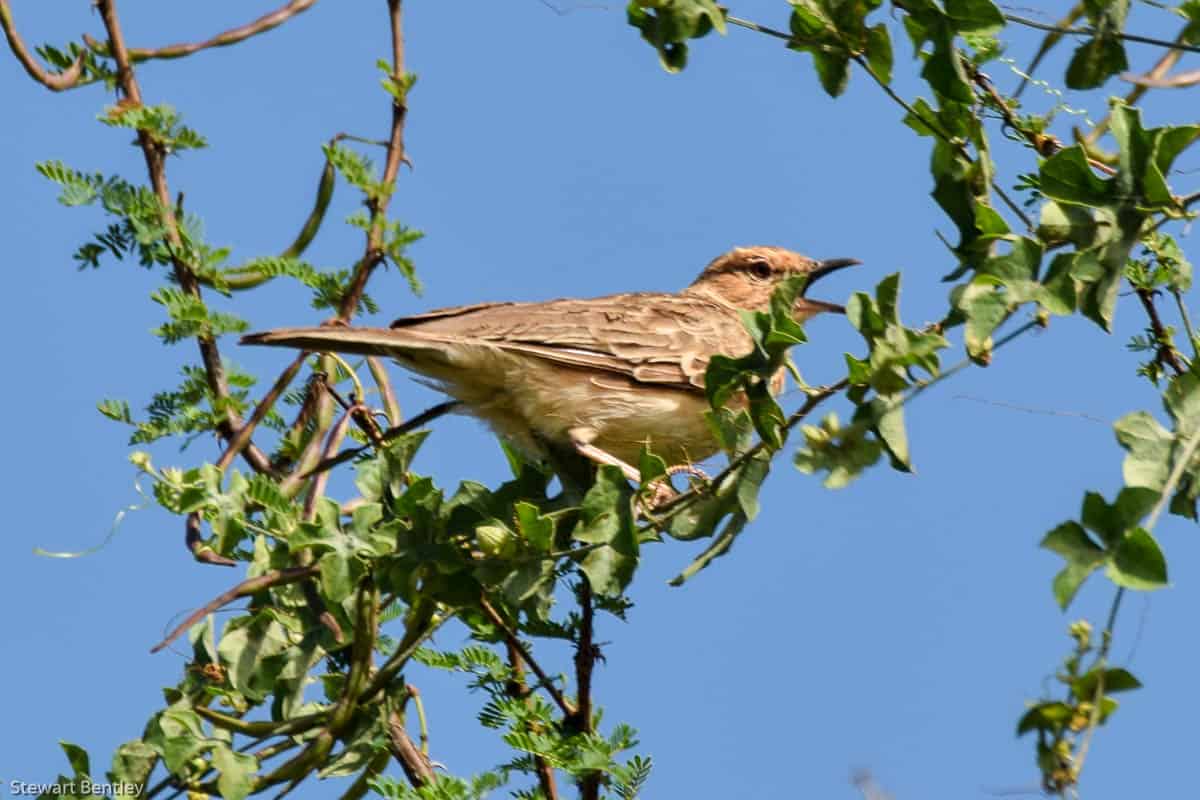
After breakfast we transferred back to Kilimanjaro Airport at 8.15am to fly to the west of Tanzania and land by the shores of Lake Victoria at Mwanza. The flight was on time at 10.20am and arrived into Mwanza at about 11.30am, where our driver/guide Roger was waiting for us. Roger sped us on the 2.5 hour journey to Speke’s Bay Lodge, situated right on the shores of the lake, arriving at about 2.15pm. A quick check-in and lunch and we were ready to spend the rest of the afternoon birding in the extensive and easily
watched grounds on the edge of the immense Lake Victoria. By late afternoon the thunder rumbled and storm clouds gathered, but didn’t impinge on our birding too much at all – the rain being very sporadic and light. We had a very productive session where a good number of the special birds not found elsewhere on our tour were notched up The water levels of the lake were very high and we were once again suffering from the odd “too much water for water-birds” syndrome. However, other species were on good form. All of the hoped-for weavers were very much in full swing, building nests and showing well; Northern Brown-throated, Yellow-backed and Slender-billed along with the more widespread Village Weavers – all giving Bill doing his E-birding problems with ever-changing names.
The emergent vegetation of papyrus, reed and sedge held both species of Cormorants, many Pied Kingfishers, a few Striated Herons, Malachite Kingfisher and passing Hadada and Sacred Ibis plus first Hamerkops. I was pleased to call out the scarce Blue-headed Coucal having only seen it here on a handful of occasions before. Inland, the open park-like grassy acacia savanna produced plenty of interest. Swamp Flycatcher, scoped Red-chested Sunbird, Black-headed Gonoleks in their bright scarlet and black very evident doing their duetting songs, Green-winged Pytilias, Blue-capped Cordonbleus and Bronze Mannikins, Grey-headed Kingfisher and some Yellow-winged Bats when the barman and general Mr. Fixit of the lodge took us out to show us four lovely Three-banded (Heuglin’s) Coursers.
The rain clouds persisted after dark, but by the time we’d finished a very good evening meal the rain had ceased.
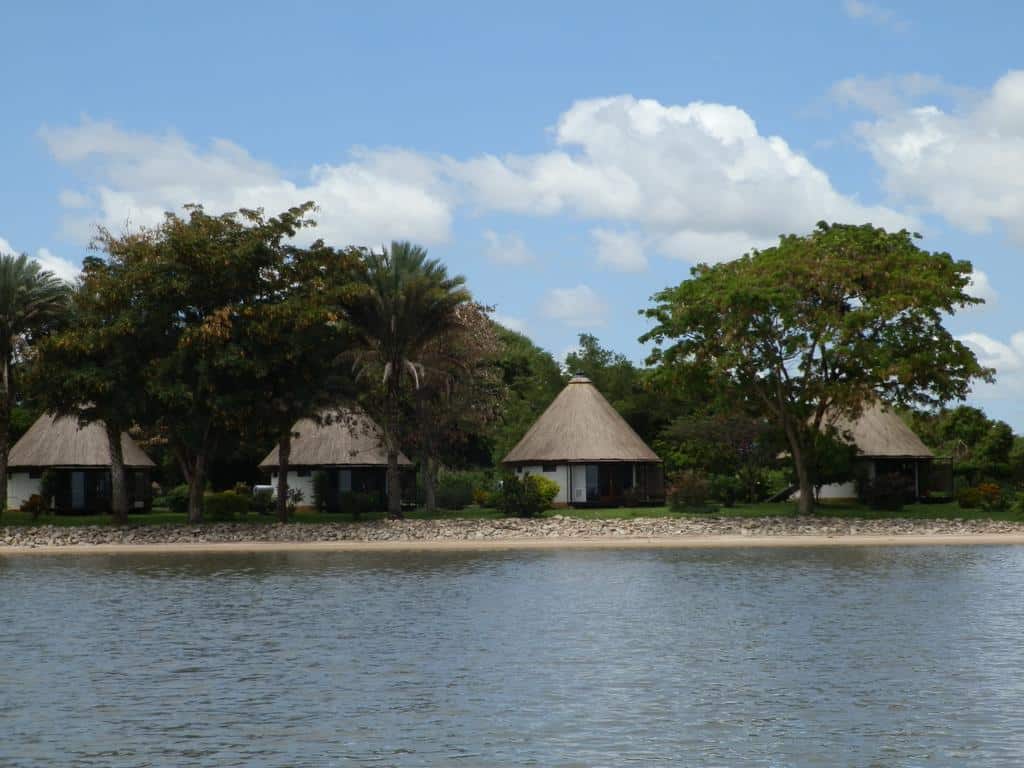
A 6.30am breakfast this morning allowed us a good 4-5 hours birding in the extensive grounds of Speke Bay Lodge before a midday lunch. The weather was OK – dry but not too hot – remaining so for much of the day. This is always a potentially exciting area where new and unexpected species may pop up and this morning produced my first ever Zebra Waxbill on this tour. Apart from that we managed to find a good selection of the special birds to be found here along the shores of the largest expanse of water in Africa. As expected, there were sadly few water-birds as the water levels were too high. However we were all amazed at the density of Pied Kingfishers over the water and in the emergent vegetation; well in excess of 50, possibly 100 birds. Weavers were even more abundant. All the usual species including Golden-backed (Jackson’s) were dashing to and fro, feeding and nest-building. Just before taking a mid-morning break for coffee back at the lodge, we managed to find a lovely Square-tailed Nightjar in one of the usual shady spots and gain some marvelous close looks. With all the nesting weavers it was no surprise to find both Klaas and Dideric Cuckoos present waiting their chance to lay their eggs. Red-chested Cuckoos had already successfully bred as we found a fledged
juvenile close to the lodge. The Usambiro type of D’Arnaud’s Barbet was a big hit as it sat with a large yellow berry in its bill. Palearctic migrants that need to start heading north were Eurasian Reed, Willow and Eastern Olivaceous Warblers.
After lunch we had to leave this idyllic spot and set off the short distance to the entrance gate of the Serengeti National Park. The journey of 70 miles or so was all the way through the Western Corridor of the Park – a glorious area of open grassland acacia savanna full of game. We had to speed along to reach our tented camp, albeit much later than intended at 7pm due to finding so much good birding along the way. We first checked the Whistling Thorn Acacia – a special habitat for the highly localised Karamoja Apalis. It took a lot of trying along the way, but eventually we struck lucky and gained some great looks at a couple of birds. The other target was to check out the riverine forest fringe of the Grumeti River to look for Eastern Plantain-eater, which we found and saw well after trying our third spot on the route. In between were many other good birds that we made short stops for – and others that Roger and I knew to be commonplace that we had to drive by. In this way we saw a trio of lovely Black Coucals, first Ruppell’s Starlings, bright Blue-cheeked Bee-eaters, Bare-faced Go-Awaybirds, Double-banded Coursers, a pair of White-bellied Bustards, several Pin-tailed and single Steel-blue Whydahs plus a lone Village Indigobird. Flappet Larks performed their buzzing wing-clapping flight displays. Raptors included first Long-crested Eagle, Bateleur and Dark Chanting Goshawk. I was especially pleased to find the recently split Tanzanian Red-billed Hornbill – as usual, thanks to our driver Roger’s eagle-eyes.
Then there was all the big game! The apparently resident population of Wildebeest was seen along with masses of Common Zebra and Impala. Smaller numbers of Giraffe were driven by on the understanding that we’d have plenty of time tomorrow and in future days to spend time watching these and the distant Cape Buffalo on the tall grass plains where birds such as Secretarybird, bustards and small groups of African Elephants were passed by.
After arriving at Kati-Kati Tented Camp there was just enough time to get the luggage to our tents, eat supper, do the bird list and fall into bed.
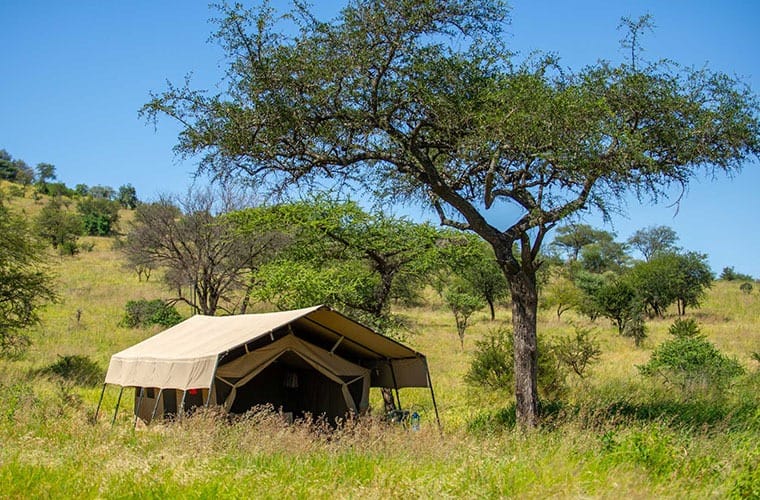
The Serengeti is a vast preserve. At 5,675 square miles, it is larger than the entire state of Connecticut (or 4 times the size of Kent if you are from UK!). With a further 3,200 sq. miles protected in the surrounding Ngorongoro Conservation Area, the total is as large as Vermont or New Hampshire (or larger than Wales!). While other areas may hold the bulk of the famous Wildebeest herds at this time of year, there are many other important habitats with different and special birds and wildlife to be found. Most importantly, this is the best area for finding Leopards.
We set out, sadly minus Bill who was under the weather, at about 8am. We decided that, as it was a long mucky drive to the camp it would be better to take a picnic with us and stay out for as long a day as we wanted. This worked out well, as much of the day was lovely and sunny but huge thunderclouds gathered in mid-afternoon. So, just as we might be setting out for an afternoon game drive it poured with rain and we were nearly back at the Tented Camp.
We concentrated on areas in the centre of the Serengeti known as Seronera, leaving it much up to driver Roger to work out best routes. We had plenty of time to stop for birds and quickly began compiling quite a list. We passed clusters of kopjes (pronounced “copies”) – large isolated, weather-smoothed and rounded lumps of granite, some the size of large houses, interrupting the vast flatness of the plains. We had super views of perched Croaking and Zitting Cisticolas side-by-side in the grassy expanses where small groups of African Elephants grazed. Bushes held Magpie Shrikes, a lone Egyptian Goose sat atop a huge and high rock in one of the kopjes. Oodles of Flappet Larks performed their curious wing-clapping displays, plus a variety of weavers – White-headed Buffalos and Rufous-tailed in particular.
Early on we missed a first possible Leopard that had just come down from a tree. We motored on enjoying watching the birds and stopped by one of the Hippo pools with masses of these gargantuan beasts wallowing, some with Common Sandpiper or Black Crake using their backs as stepping stones. On the shores were shorebirds/waders such a Wood and Marsh Sandpipers, Three-banded Plovers and so on. Engrossed in these we were oblivious of a Lioness sauntering down the road towards us until another landcruiser called across to us. Very embarrassing! The Lion put on a good show, wandering over to another female previously hidden in the grass, where they greeted one another, then both wandered back to a small stream, drank and eventually walked into tall grass – lost forever.
We arrived at the Seronera Visitor Centre by midday and took the chance for a walk around the interesting Kopjes there with the Wildebeest migration timeline explained. This took us to lunch time where we ate in close company of the Rock Hyraxes, Grey-capped Social Weavers, Kenya Rufous Sparrows, D’Arnaud’s Barbets and Speckle-fronted Weavers all looking for scraps and crumbs from our picnic.
After lunch driver Roger whisked back down the road close to the airstrip where the grapevine told him there was a Leopard to be seen. In fact, on arrival there were two to be seen – a first for me in all my 36 visits. We reckoned it was a male and female courting and staying together for the few days they mate before going off to live their solitary lives again. It was a splendid sight to see these two gorgeous animals close together on what looked like very uncomfortable branches up a quite small tree – their legs and tails
dangling below them. Finishing up here we did a further gentle circuit of the side tracks up and down the little waterways and lines of Yellowbark Acacias. Another phenomenal gathering of Hippopotami was watched for a good while. At least 75 were crammed together in a foetid river, their antics of splashing, giving their huge yawning warning signs, guffawing and rubbing along together was fascinating. We also wanted to find Nile Crocodiles this afternoon as it was our best/only chance and I’d seen several whoppers in the area with the other group last week. We did well again, finding 9 in total including 2 at least of gargantuan proportions. With them by their muddy pools were first delicate Wire-tailed Swallows and Spur-winged Plovers.
We’d planned to return to the Kati-Kati Tented Camp by about 5pm, but thunderclouds gathered and threatened imminent rain, so we started making tracks for home a little earlier. With time to stop for birds we had several last good short sessions attracting birds in with owl call. Chinspot Batis, Brubru, Beautiful Sunbird, Purple Grenadiers, Red-faced Crombecs and more all obliged, close to where bright little specialised brood parasites – Steel Blue Whydah and Village Indigobird hung out looking for unsuspecting victims. We passed a close Secretarybird, several hunting Montagu’s Harriers, a lovely lone Eurasian (African) Hoopoe, a fine pair of Rufous-crowned Rollers (much scarcer than the other species of rollers here), our first woodpeckers of the trip – Nubian and Mountain Grey and kicked up small groups of roadside Fischer’s Sparrowlarks. Further very close roadside Giraffes were watched eating acacia leaves, twigs and the pin-sharp thorns while being carefully “groomed” by attendant Red-billed Oxpeckers.
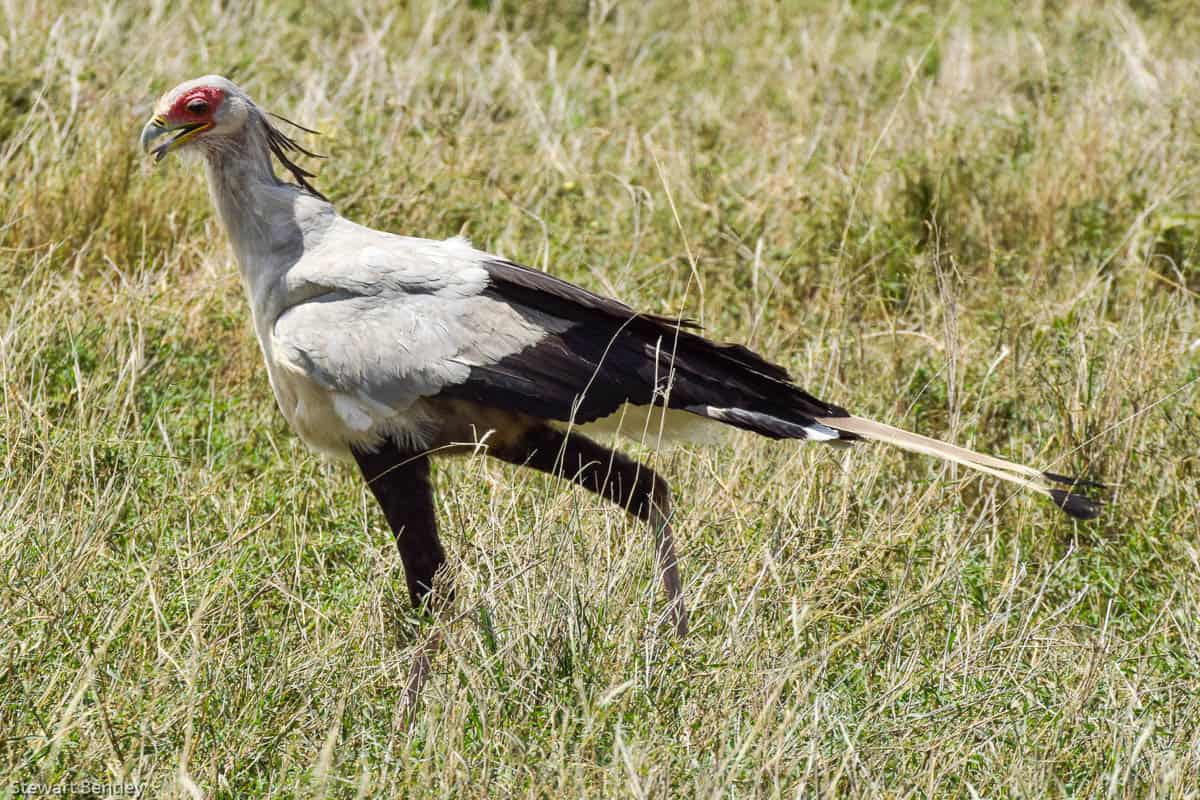
We set off at 7.45am eastwards towards Naabi Gate where the National Park ends and the Ngorongoro Conservation Area (NCA) begins. It had rained heavily for a short while overnight, but was pleasantly bright, dry and sunny today. We had all morning for the journey so had plenty of time to wander and stop wherever we wished. I left driver Roger to decide the route and he took us via some tracks to the south of the main exit road all of which produced a really memorable and exciting morning. First off we encountered a herd of 40 or more African Elephants and watched as they slowly munched their deliberate way through the grassy savanna. There were large bulls on the periphery and plenty of mothers with all ages of calves, some looking almost newborn. The plains they wandered held the usual abundance of cisticolas (including Desert Cisticola) plus occasional Greater Kestrels, single Grey Kestrel, Montagu’s and first Pallid Harriers, plus pairs of Black-faced Sandgrouse and Coqui Francolins on the track. It was interesting to find a juvenile Great Spotted Cuckoo along the way as most are considered migrants rather than breeding here. Little Sparrowhawk was an unusual find and a Striped Kingfisher on a small isolated dead tree in the middle of nowhere allowed very close scrutiny. Roger’s incredible driving skills across this tricky terrain where a fuel lorry was passed – stuck in the mud since yesterday – was equaled by his
ability to pick out birds as we drove along. Especially impressive was his spotting of a distant Whinchat as he negotiated the ruts and mud.
By late morning we had reconnected with the main exit road after a long drive over tracks that varied from smooth, dry and dusty to slick, slippery and sliding in deep water and muddy ruts. Birds of interest included a pair of Cape Crows – probably the only ones we’ll see on the tour – plus a Black-headed Heron swallowing a dead rat in an almost identical observation to one made with the previous tour! There was very little game out there apart from the Elephants, so it was a delightful surprise to reach the main road and find a super group of 5 large, fat and contented Lionesses all sat on top of a classic isolated kopje. I’d never seen such a “picture book” scene. We watched these for a while, pondering what they might be doing and whether they were part of a larger pride. Then, turning to look in the opposite there were another three similarly posed on another kopje several hundred yards away. We continued on our way and as we neared Naabi, as the plains became more obviously “short grass” there was a sudden and dramatic presence of game animals. A virtual wall of black and white stripes presented itself as we came upon an immense, dense gathering of Common Zebras. No attempt was made to count them, but there were many thousands stretching over a huge distance. Beyond them we could discern a dark blur of Wildebeest in an arc of 120 degrees or more – again uncountable thousands disappearing over the vast, flat horizon. As icing on the cake, here too was another lone Lioness looking very intently at the Zebra, hunkered down and ready to try her luck at a chase. The Zebra however, detected her and kept a safe distance and a watchful eye. But even the keen eyes of Zebra could not have seen our final Lion of the day – a large male tucked right under a tiny bush, so well hidden you could have stumble on him without noticing until it was too late.
We arrived at Naabi Hill by 1pm, checked out of the National Park, had our picnic and took a walk on the circular trail up the little hill. There weren’t many birds except for a lovely loose gathering of Lesser Kestrels. But it allowed us to get a full panoramic view across huge extents of the Serengeti to see where we’d come from, where we were going next and how far the Wildebeest had spread.
Tracks were dry enough to be able to take the most direct route, turning south to Ndutu Lodge across further flat, short grass plains, scattered with just a few Grant’s and Thompson’s Gazelles accompanied by many White Storks. But there were a lot of LBJs – Pectoral-patch Cisticolas and Foxy Lark in particular. A more exciting find was a calling male Hartlaub’s Bustard – the first one I’d seen in Tanzania for a good few years. Nearing the Lodge and passing by the southern edge of a very full Lake Ndutu we became aware of vultures: lots of them. We eventually drove around the bottom of the lake and discovered the reason. Several Wildebeest (possibly as many as 20-25) had stupidly tried to cross the lake, got stuck and died. It seemed that every White-backed Vulture and Ruppell’s Griffon in East Africa had gathered here: 275 – 300 at least. This was a very
heartening sight after all the horrible declines in vulture numbers happening in Africa due to illegal poisoning.
Once arrived at Ndutu Lodge we checked in to our rooms, had afternoon tea and took a leisurely walk around the grounds. Playing Pearl-spotted Owlet brought in a few birds mobbing the perceived threat – including the Owlet itself. We also found another couple of adult Great Spotted Cuckoos looking interested in the large nests of Red-billed Buffalo and Rufous-tailed Weavers.
During supper the Common (Small-spotted Genet) put in a very brief and early appearance before we all took to our beds.
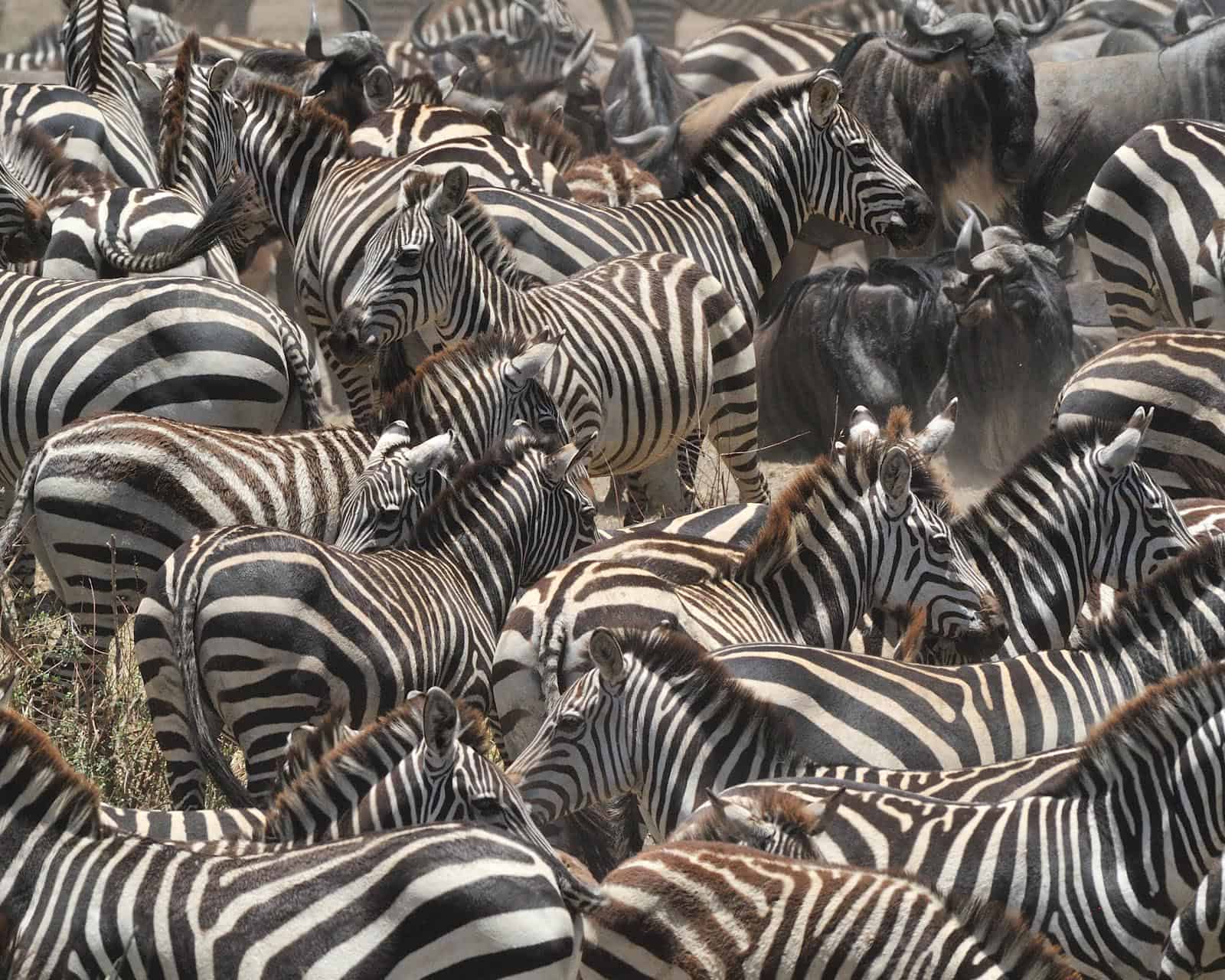
It was dry overnight and, although cloudy to start with, dry all day, making the driving tracks much more negotiable than last week. We set off at about 7.30am after breakfast, returning for lunch by 12.30pm on what turned out to be a very productive excursion just pottering around Lake Masek to start with, then Lake Ndutu later. We had no set agenda, thus had many good stops for birds as we motored the tracks around the edge of Masek and in the surrounding acacia forest. Our first little side trip was back to the edge of Lake Ndutu where we’d seen all the vultures as we arrived yesterday afternoon. The vultures were still there and we had a chance for another accurate count and further good looks. We reckoned at least 300 were present, with 200 or so being Ruppell’s Griffons. They were continuing their gruesome feast of Wildebeest that had foolishly wandered into the lake and got stuck and/or drowned – an annual occurrence by all accounts. Birding was good, especially with driver Roger spotting for us. Both Black and Southern Red Bishops were noted, along with other bright species such as Cardinal Quelea and Cardinal Woodpecker. While pootling about birding we were made aware of a nearby Lion so went and had a look at that. She was walking up the track, totally un-phased by the attention of several Landcruisers following along behind her! Eventually she wandered off and was relocated reclining on a very comfy looking branch in a large acacia. Tree-climbing Lions are quite scarce, so this was a particularly interesting sighting.
The edge of Lake Masek produced some good wetland birding with lots of bright, pink-flushed Yellow-billed Storks, a couple of African Spoonbills and Great White Pelicans along with Gull-billed and Whiskered Terns, Pied Avocets, Black-winged Stilts, Cape Teal, Ruffs, a single Red-knobbed Coot and two Squacco Herons among the usual herons and egrets. Further vulture sightings here added Hooded Vulture to our list.
While enjoying all this, Roger got word on the radio that Cheetahs had been located and suggested we head off to try for them. Needless to say, once we’d established that they were not many miles away, we all agreed to “give it a whirl”. Roger swiftly relocated us
to the edge of a very full Lake Ndutu, and within 20 minutes we were watching our first of these beautiful cats. They were a trio of males – presumed brothers, all looking very relaxed under a partially shaded, but quite small bush giving us all clear views from quite close range. There was only a handful of other vehicles there so they were not hassled in any way. But after a while they did all stand up and wander over about 30 yards to a patch of tall grass and flowers and disappeared inside – presumably it was cooler in there? Had they gone there to start with, nobody would have had a clue that they were present – such is serendipity!
On our return from the Cheetahs we had a bit of time to check over the water’s edge and muddy margins of the lake to good effect. Decent looks at Kittlitz’s and Chestnut-banded Plovers side-by-side were a main attraction with a supporting cast including many Ruff, a small group of Curlew Sandpipers and other odds and ends. Back to the Lodge for lunch, it was very pleasant to have a break, and a good sit down meal.
Afternoon tea at 3.30pm and out for a game drive soon after. We decided to retrace our steps and do some birding around the open woodland at Lake Masek again for a couple of hours. What started out as a hot sunny afternoon turned into thick, dark blue, all-round storm clouds and threatening rain by the time we returned to the lodge at 6pm. However, there were some good birds found by stopping and watching places where birds were coming down to drink and bathe, and by playing owlet calls – or just by quick observation usually from driver Roger – the Three-banded Courser and Eurasian Golden Oriole being a case in point. Blue-capped Cordonbleus, another Cardinal Quelea, Green-winged Pytilia, Tawny-flanked Prinia, Banded Parisoma, Red-backed Scrub-Robin and Straw-tailed Whydah were all seen quite well. Hamerkops played in puddles in the track, while we watched the masses of vultures from this morning circling high and dispersing. Bateleurs, Dark Chanting Goshawk and Augur Buzzard posed nicely. We also enjoyed watching a small group of African Elephants passing close by.
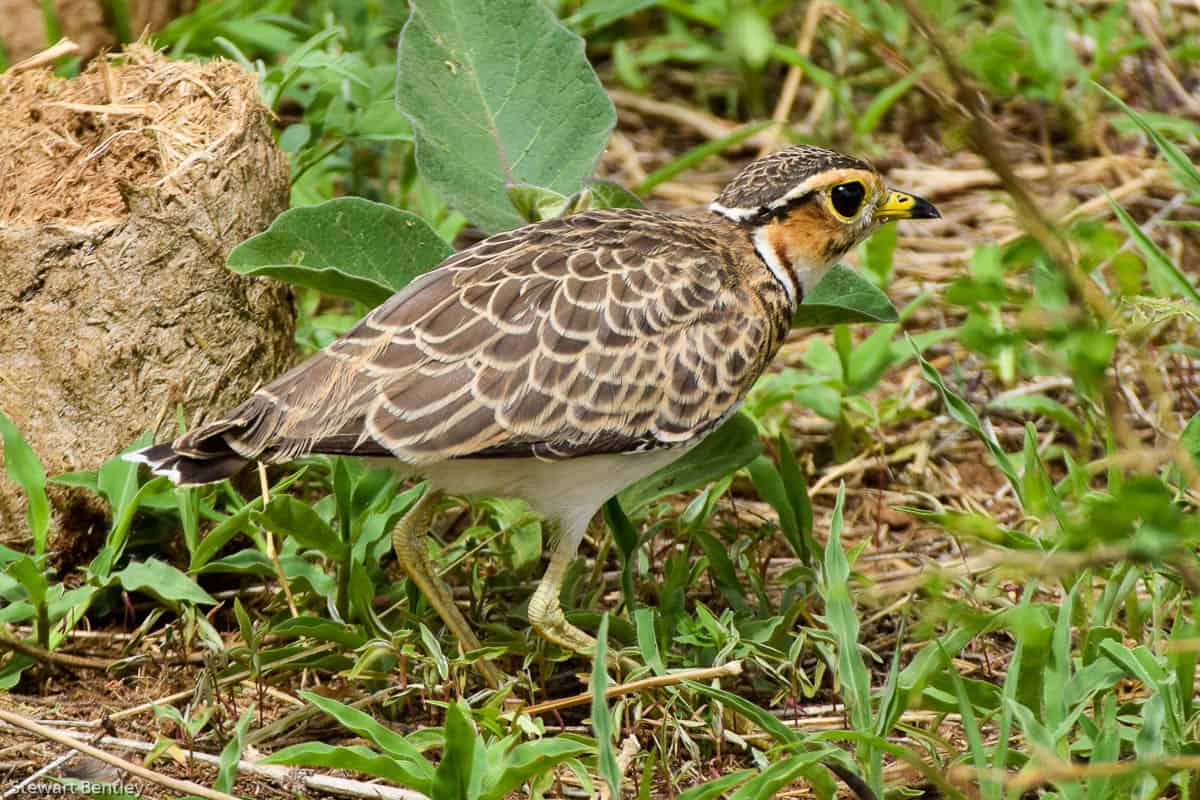
We had another good morning game drive heading out to the large swamp. It had remained dry – at least here – overnight and was cool, dry with a light cloud cover this morning, making travel pleasant. Prior to our departure Bill and I heard the deep, sonorously gruff hoot of Verreaux’s Eagle-owl by the cabins. While trying to work out which large acacia it was in, the bird obligingly flew out, landing in other large trees at the far end of the site where we couldn’t relocate it even though it was still calling. There weren’t huge numbers of game animals about and other vehicles confirmed that the nearby short-grass plains where large Wildebeest gatherings can occur, were fairly empty. This saved us the bother of looking and we concentrated our time elsewhere.
Game animals were generally few and far between. A lone bull Eland was new for us. But the birding was again quite productive. Numerous cuckoo species were seen. We were fascinated to see that quite small chicks of Grey-breasted Francolins can fly. Firsts were Abyssinian Scimitarbills and a group of White-winged Widowbirds, including 2 displaying males. A Foxy Lark (split from Fawn-coloured) gave brilliant views singing close by atop an acacia bush. Owlet calls brought in a variety of “small stuff”, much of it seen on previous days. A pair of bizarre Southern Ground Hornbills were a bit more flashy and provided entertainment as we tried to identify what each had caught and were walking along with in their bills. We decided one had a skink and the other a fledgling bird. The swamp area was tricky to drive around. Driver Roger did a magnificent job overall throughout the morning getting us around the wetter, muddier, slippery bits to the best spots. A group of 11 Collared Pratincoles on the wide sandy flats around the swamp was a good find along with the usual range of waders.
Most interest for the morning’s drive centred round a trio of great mammal sightings. We relocated yesterday’s three male Cheetahs, this time with fewer vehicles, closer looks and right out in the open. Next up was a splendid male Lion with grand bushy mane, again lazing right out in the open just feet from our vehicle – totally unconcerned and eyes closed in rest for much of the time. Finally, as requested, Roger got us back to last week’s location for Bat-eared Foxes and, sure enough, there they were again – a lovely playful group of six of these little gems.
Back at 12.30pm in time for lunch and a break until 3.30pm, we were out again by 4pm. Roger took us along the edge of Lake Ndutu for the afternoon. On leaving the lodge we got some great looks at a pair of Von Der Decken’s Hornbills and an Abyssinian Scimitarbill, while a little further down the track were a perched juvenile Martial Eagle and fleeting African Golden Oriole. Firstly we checked on the vultures still gathered feeding on the Wildebeest carcasses. The numbers had, if anything, increased. A rough count produced c.100 White-backed and 300 Ruppell’s Griffon Vultures along with at least 100 Marabou Storks. It was a phenomenal gathering and a gruesomely fascinating sight as we managed to get quite close to some of the feeding groups. Further along the edge of the lake and in the adjacent scrub we found a few extra birds of interest including Chestnut Sparrows, displaying Southern Red Bishops, Great White Pelicans, Greater Flamingos and reasonable looks at passing Whiskered and White-winged Terns – some in breeding plumage.
Back at the Lodge by 6pm it was good to find my colleague Anthony Raphael just arrived with a group, giving us a chance to catch up with each other during the evening. Luckily tonight, just after supper and just before everyone had gone towards their beds, the Common Genet showed up and put on a show for us – an enchanting little animal that we all wanted to take home as a pet!
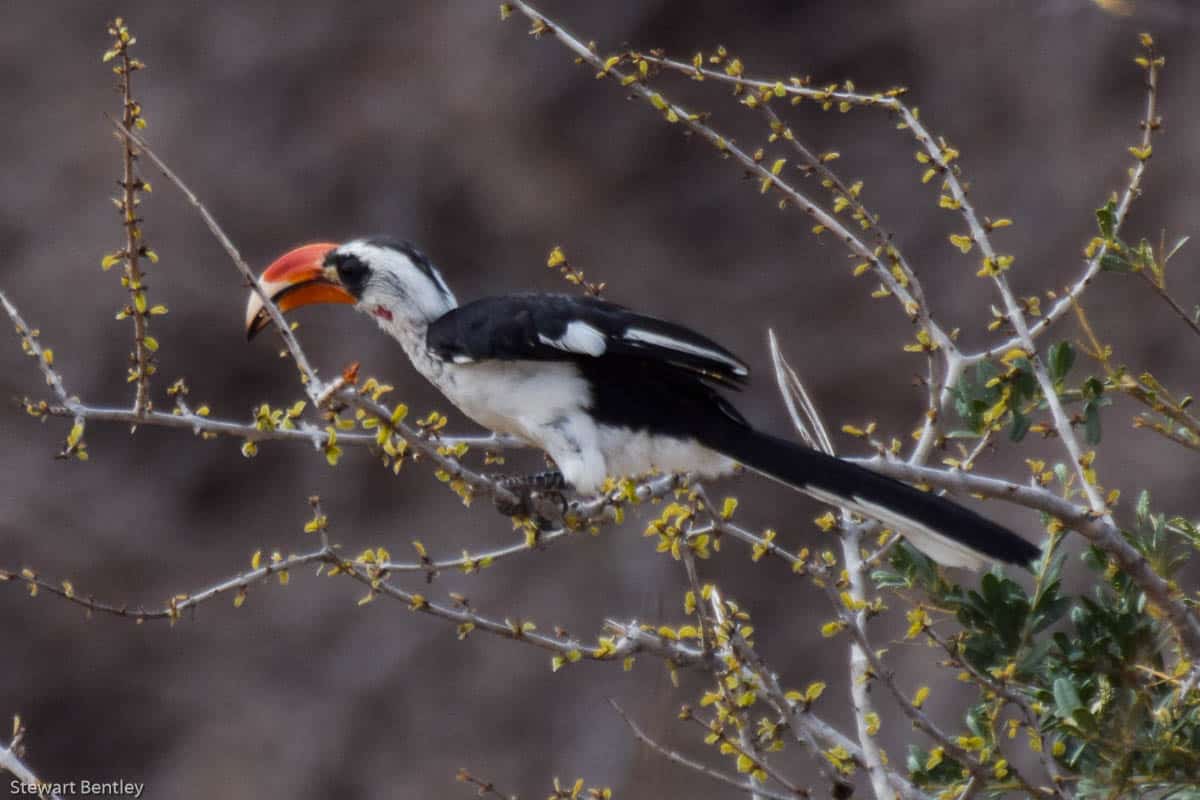
Bill and Marsha were treated to a view of a comfortably distant Lioness outside their cabin as they went to breakfast this morning. We left Ndutu Lodge at about 7.45am on our journey east towards the famous Ngorongoro Crater finding 3 dapper Three-banded Coursers and a couple of Rufous Chatterers almost as soon as we’d set out. This visit has produced some weird weather and it was strange to be driving across the short grass plains in fog today. However it eventually cleared and we were treated to a productive drive for many miles across open short grass plains, in places full of Common Zebra, Thomson’s and Grant’s Gazelles. As we drove, we were able to appreciate the huge scale of this remarkable, intact ecosystem that we’ve been travelling through west to east for several days now. The plains produced a few good and new birds for us, though Roger’s first Ostriches were several miles away on the horizon and try as we may, it was difficult to get folks onto the tiny, aerial, buzzing, yet quite common Pectoral-patch Cisticolas. Closer at hand were plenty of Capped and a lone Isabelline Wheatear. Red-capped Larks appeared on cue. With Driver Roger’s phenomenal spotting we had good looks at both Chestnut-bellied and Yellow-throated Sandgrouse by the roadside. He also found us a couple of the rather localised Taita Fiscal Shrikes, but we all managed to spot the huge bulk of our first Kori Bustard.
We paused for photos as we joined the “main road” to and from the Serengeti, with its new arch and sign, then pressed on along the horribly corrugated route towards the archaeological site of Olduvai Gorge. As I’d hoped, we arrived early (by 10.30am) and had the place more or less to ourselves. We did an hour’s bird walk in increasingly hot and sunny conditions, then spent an hour walking through the exhibits at the state of the art museum/interpretive centre before having our picnic lunch overlooking the layered rocks of the Gorge. Thus we paid homage to our ancestors and learnt a little about early hominids starting 3.5 million years ago. A young woman filled us in on the basics of Leakey’s exploration and the development of the site as we ate lunch. The birding at Olduvai can be productive, but was fairly quiet today. Best finds were from Marsha with an African Paradise Flycatcher and Red-fronted Barbet along with Banded Parisoma.
By a little after 1pm we were on our way again, driving steadily uphill into the Crater Highlands with scattered Maasai flocks of goats, sheep and a few cattle and donkeys tended mostly by small children. But even up here there was still an abundance of wild game animals with groups of Wildebeest, Zebra, Giraffes and gazelles happily sharing the habitat with the domestic livestock. At the Crater Descent Road by 1.45pm, we had plenty of time to slowly work our way down into the Crater and around the tracks to the far side where our Lodge was placed. From the top of the Descent Road and working our way slowly down, we saw pretty much all of the target birds I’d hoped for. Hildebrandt’s Francolins showed briefly. Dusky Turtle-doves, Streaky Seedeaters and
Southern Citrils were commonplace and Northern Fiscals regularly seen. A small group of Waller’s Starlings and single Long-billed Pipit were unexpected bonuses. The recently split Abyssinian Wheatear showed well at the start of the descent. Yellow Bishops and Northern Anteater-Chats were abundant and obvious. The brilliant yellow and black of the Bishops and the noisy posturing antics of the Chats particularly memorable. But Boy! What a stunning look at the Wailing Cisticola. Hard to call out at first we got lucky a long way down the road with glorious views of this special little bird. Once on the Crater floor we took a track through the centre of the crater floor passing the massively enlarged Magadi soda lake with only a few Greater Flamingos remaining plus a good selection of ducks, ibises and shorebirds plus a first spectacular Grey Crowned Crane and 3 Black-winged Lapwings. Driver Roger spotted a superb Rosy-throated Longclaw for us right by the side of the track. The resident masses of Wildebeest, gazelles and zebras were, as always, very confiding and offering the best photo opportunities of the trip. Our first Hyenas of the tour were less photogenic as they slouched and lounged in the open. The tracks down in the crater had, if anything, deteriorated since last week, presumably because of continued rain. We got wind of a Black Rhino and went briefly in that direction, finding that the road was closed, but the Rhino distantly in view. We hope for a closer one tomorrow, but at least we’ve glimpsed this mythical, rare beast. Everything seemed perfectly timed, as we’d just finished up with the Rhino, turned around to head up the rim to the Sopa Lodge when the ever-increasing and nearing black thunder clouds turned into a fairly torrential downpour. We battened down the hatches and Roger did yet another magnificent job of driving us safely through some truly nasty, slippery, muddy tracks to the exit gate.
We arrived at the lodge by about 5.45pm. The lodge itself perched on the rim of the immense caldera of Ngorongoro afforded us fine views at dusk after the storms had cleared again. The space, size and comforts of the lodge seemed much appreciated as was the good supper.
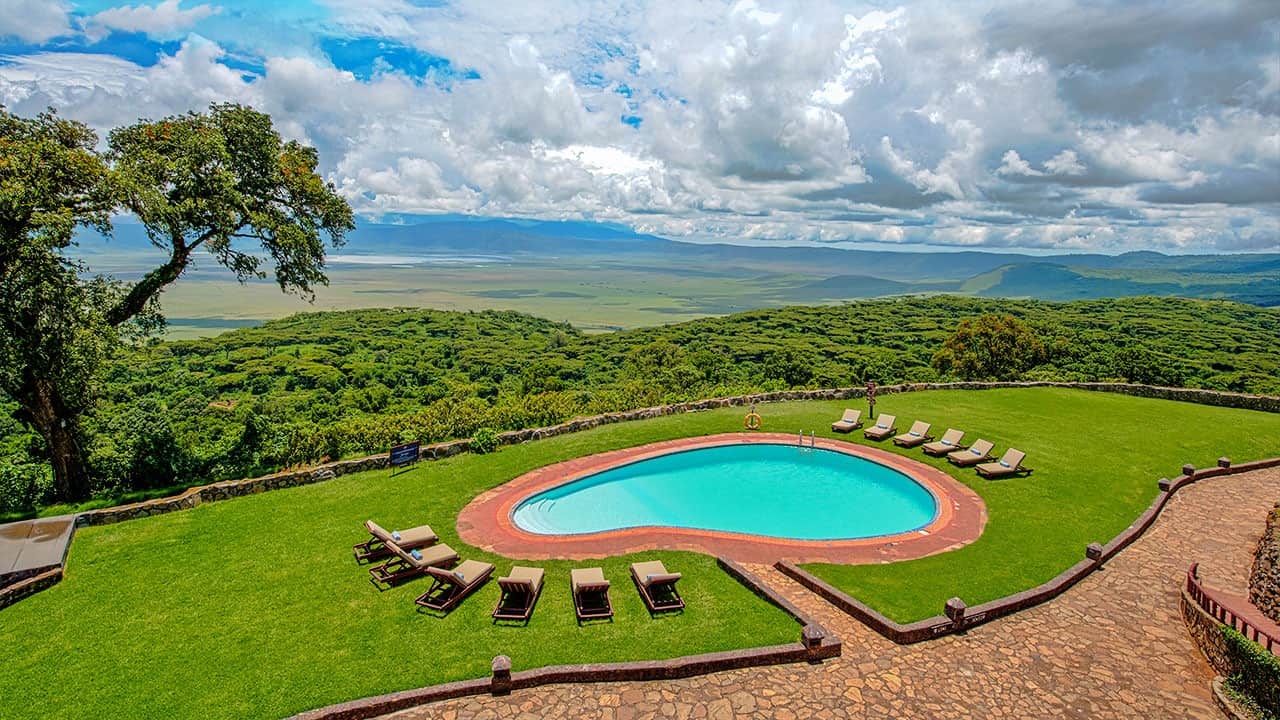
We had a 7am breakfast and departed Kati-Kati Tented Camp with all our bags packed at about 8am. We had a couple of hours of game-drive before needing to be at the airstrip to check in for our 11am flight back to the domestic airport in Arusha. The hope was, of course, that some Lions might do the decent thing and give us a last minute show – but they didn’t. Roger of course was trying his best and drove us around every likely spot within striking distance, but again, nobody was having any luck. We did see some very good action from numerous Hippos including one large individual walking out in full view and many others in a tight gathering immersed in their foetid pool. The usual birds showed – bustards, harriers, eagles and cisticolas and we (aka Roger) also did the good deed for the day in pulling out of the mud a deeply embedded landcruiser. Before we knew it, time was up and we were at the Seronera airstrip awaiting our flight. The flight was a good one in that it was on time, in a larger than usual twin-engine plane with plenty of space for my overweight bags and it went directly to Arusha without pick-ups along the way.
At Arusha we were met by a driver and Anthony Raphael’s charming 15 year-old daughter Stella who transferred us to “Cultural Heritage” for a good final lunch. With Margaret and Lynda’s flight out at 6.10pm there wasn’t a huge amount of time to do “Cultural Heritage” much justice with its masses of little boutiques offering all sorts of things to buy: everything from small inexpensive items to grand works of art and carvings. The fine gallery of art works and Africana cultural and tribal exhibits was given a quick look. There is some exquisite stuff there that was worthy of a much longer time to appreciate. We left at 2.30pm to transfer back directly to the International Airport for Margaret and Lynda, arriving at about 3.40pm. After saying our goodbyes to them we returned to the KIA Lodge, where Celia and Stuart had a day room to allow for a rest, wash, change and re-pack for their return journey home on KLM this evening. I remained in Tanzania at Kia Lodge to meet the next group coming in on the KLM flight that Celia and Stuart flew out on.
We had a 7am breakfast and departed Kati-Kati Tented Camp with all our bags packed at about 8am. We had a couple of hours of game-drive before needing to be at the airstrip to check in for our 11am flight back to the domestic airport in Arusha. The hope was, of course, that some Lions might do the decent thing and give us a last minute show – but they didn’t. Roger of course was trying his best and drove us around every likely spot within striking distance, but again, nobody was having any luck. We did see some very good action from numerous Hippos including one large individual walking out in full view and many others in a tight gathering immersed in their foetid pool. The usual birds showed – bustards, harriers, eagles and cisticolas and we (aka Roger) also did the good deed for the day in pulling out of the mud a deeply embedded landcruiser. Before we knew it, time was up and we were at the Seronera airstrip awaiting our flight. The flight was a good one in that it was on time, in a larger than usual twin-engine plane with plenty of space for my overweight bags and it went directly to Arusha without pick-ups along the way.
At Arusha we were met by a driver and Anthony Raphael’s charming 15 year-old daughter Stella who transferred us to “Cultural Heritage” for a good final lunch. With Margaret and Lynda’s flight out at 6.10pm there wasn’t a huge amount of time to do “Cultural Heritage” much justice with its masses of little boutiques offering all sorts of things to buy: everything from small inexpensive items to grand works of art and carvings. The fine gallery of art works and Africana cultural and tribal exhibits was given a quick look. There is some exquisite stuff there that was worthy of a much longer time to appreciate. We left at 2.30pm to transfer back directly to the International Airport for Margaret and Lynda, arriving at about 3.40pm. After saying our goodbyes to them we returned to the KIA Lodge, where Celia and Stuart had a day room to allow for a rest, wash, change and re-pack for their return journey home on KLM this evening. I remained in Tanzania at Kia Lodge to meet the next group coming in on the KLM flight that Celia and Stuart flew out on.
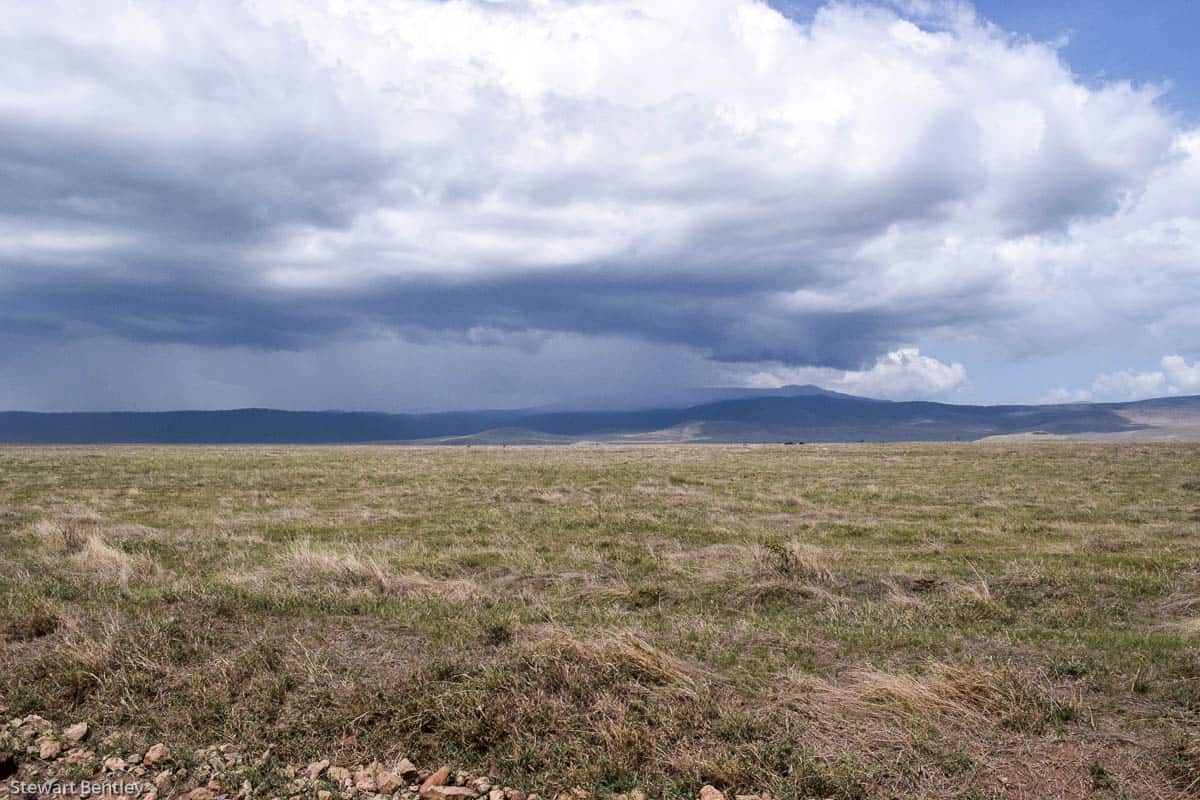
The pre-breakfast birding was curtailed somewhat by the presence of a very large Elephant on the lawn by the cabins, demolishing and eating small bushes. We thought of just pushing past, but decided against the idea. Main bird of interest was a group of 3 Red-fronted Parrots zipping by at speed. After breakfast we packed up and started the drive around the rim of the Crater heading out of the NCA and on to the smooth paved road for the first time in many days. We tried a bit of birding along the way, halting at likely spots and trying various calls. We saw a few things of interest but no really good close, long views despite quite pleasant sunny weather. The rains had produced a lush wall of greenery that birds very adeptly disappeared into, but we saw a few recently split Mbulu White-eyes. We made a final brief stop at the viewpoint overlooking Ngorongoro and that was the end of that section of our tour. Before we knew it we were in the town of Karatu and turning up the road to Gibb’s Farm for lunch. We arrived early enough for an hour’s stroll around the very lush flower gardens seeking out a few new species. Again, seeing anything really well eluded us, but there were Ruppell’s Robin-chats, Bronze & Amethyst Sunbirds to keep us busy.
After one of the best lunches in Tanzania we had to drag ourselves away from the idyllic and beautiful laid out ornamental gardens and coffee plantations at Gibb’s and set off for an afternoon hike. Roger was able to drive us right up to the gate where a young lady called Delma – a ranger wielding blue varnished nails and an AK47 accompanied us on our walk along with the local bird guide. Of course, with the excessive rains came a muddy trail and halfway through our walk of about 1.7 miles each way to the Elephant Caves, there was further heavy thunder and threat of more downpours. Luckily the storm skirted us and we managed to complete the hike, but again birding was difficult. Birds were seen, but not as many species as I’d expect and few seen very well. Cinnamon-chested Bee-Eaters were seen better than most, and other birds of interest included Spectacled Weavers, Brown-headed Apalis, Black Cuckooshrike, Grey-headed Nigrita, Eastern Mountain Greenbul, Black-throated Wattle-eye, Gray-capped Warbler, Black-crowned Tchagra, African Hill Babbler, Yellow-bellied Waxbills and some glimpses of the very special White-tailed Blue Flycatcher. Overhead were a pair of Mountain Buzzards and later a kettle of 16 migrating Steppe Buzzards. At the far end of our trek at the elephant cave – actually a large bare earthy slope where elephants eat mineral clays at night – we saw a new mammal in the form of a lone Bushbuck.
After our walk finished at about 5pm we transferred the very short distance to Tloma Lodge – another lovely site full of flower gardens – for our overnight stay. We got to our rooms and washed up before reconvening by the swimming pool at dusk to try for
Abyssinian Nightjar. The bird called back but wouldn’t come in, so we went to meet it. After a short bit of playback it swooped in narrowly missing Roger’s head and giving some brief but clear views in the process.
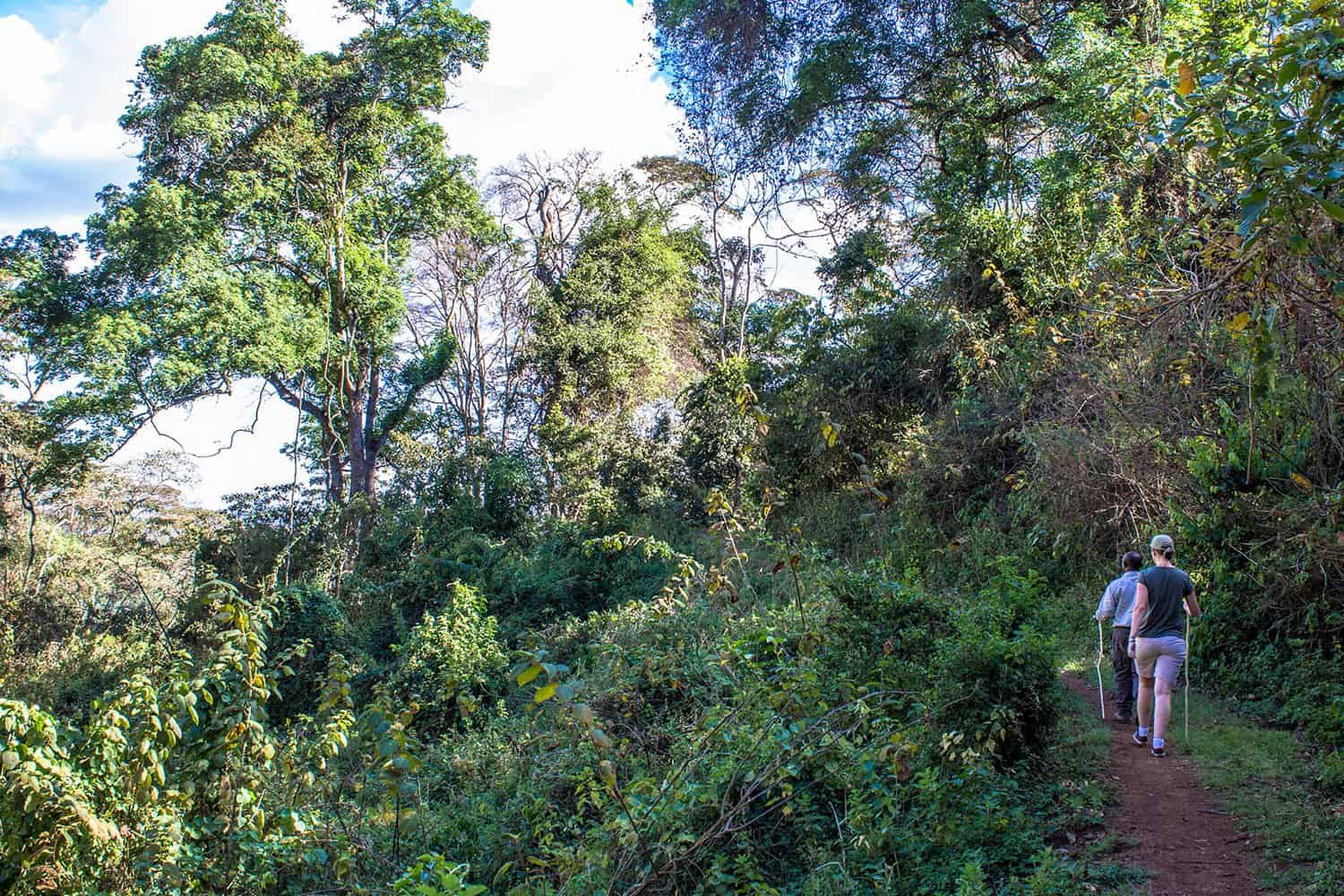
There was no need to set out particularly early from Tloma Lodge this morning as the entrance to Lake Manyara National Park was only a short drive. Thus we gathered at dawn and did a bit of birding, wandering through the gardens of coffee, vegetables and flowers to see what might be about. It was overcast and surprisingly quiet but a group of Arrow-marked Babblers showed really well. We packed up and set off at about 8.45am for the very short drive westwards, down the steep escarpment of the Rift Valley to Lake Manyara National Park where we had the option to spend as much of the remainder of the day as we chose.
Lake Manyara is a small National Park centered round a soda lake directly below some stunning Rift Valley cliffs. The drive down the Rift is always impressive, even though we’d had mist and fog earlier on the drive. Once at the entrance Roger did the paperwork while we admired the pelicans in fine breeding dress. Lake Manyara is usually a magnet for water-birds, but with excessive rains the like of which have not been experienced for 35 years, the lake is absolutely huge at the moment. This has made access to the shoreline impossible and diluted the salinity, meaning zero flamingos: all very disappointing. However, as soon as we’d started our drive into the Park we passed through miles of very impressive, tall forest fed by streams rising through the base of the Rift Valley cliffs above. This cool, shady habitat is home to massive Silvery-cheeked Hornbills and we came across half a dozen or more as soon as we got going. They gave brilliant eye-level views as we pondered how huge the tree holes have to be to accommodate these when nesting. All through this forest we tried playback for Narina Trogon and Purple-crested Turaco, but had no luck. Once out of the forest and into more open, shorter acacia with palm groves we did have better luck calling out the localised Collared Palm-Thrush in the only locale I know for it on the tour. Manyara is “Baboon-central” and there were masses of these fascinating monkeys giving many close encounters – large groups in all sorts of activities, including today splashing about in the vastly extended lake edge where dry acacia savanna used to be.
We made a couple of turns down what used to be a brilliant loop road to the wetlands, but within yards they were disappearing into deep water. Best sightings by far were a couple of distant Verreaux’s Eagles and a lovely flock of 17 Crested Guineafowl with young crossing the forest road in front of us. I only see either species once in a blue moon and was especially pleased to encounter so many Guineafowl at once and gain such lovely looks. With the lush green cover and the lake several times its normal size
the classic big game animals that might be expected were in very short supply. Best find oddly enough was a decent-sized Leopard Tortoise on the side of the road.
Despite being personally a bit disappointed in not seeing as much as I’d expect or hope for, we managed a few other nice sightings of birds in addition to those specials mentioned above. We did well for hornbills with 5 species recorded including lots of Crowned. Broad-billed Roller was a good find as you never know where one might pitch up. Other raptors included African Harrier-hawk And Long-crested Eagle. African Spoonbill was watched in very animated feeding in the lake shallows. Several first decent looks were had of Emerald-spotted Wood-Doves flushing up from the road in front of us. We enjoyed extremely close views on our picnic table of flamboyant Red-and-Yellow Barbets and more sombre, but scarcer Yellow-bellied Greenbuls. There was an all-too brief sighting of a first White-headed Barbet high in a dead tree. A flock of 40 or so Red-billed Queleas darted past, pausing just long enough for some acceptable looks at the bright males.
We exited the National Park fairly early as our route options around it were limited. I tried that horrible raucous turaco call too many times at various places where we’ve seen it before, but again no luck. Driving back up the Rift Valley on that smooth paved road we stopped to admire the view and gave in to buying some trinkets from the locals. Arriving at the very well-positioned and well-appointed Lake Manyara Serena Lodge by about 4.10pm we actually “relaxed” for a short while with tea by the pool overlooking Lake Manyara below us. The grounds can be very productive for birds, but a walk around didn’t produce much at all other than Black-backed Puffback. The day had warmed up considerably and was humid too, resulting in the typical build-up of cloud and heavy downpours just prior to going for supper at 7pm.

After further periods of rain last night it was a damp and overcast morning. We had a 6.30am breakfast and then spent an hour and a half wandering the extensive grounds of the Serena lodge not finding a great many birds. A couple of falcons nipped right past on the cliff edge of the Rift Valley and one looked to be a Peregrine, the other smaller and unidentified as views were brief. We could see down into Manyara National Park with the Baboons stirring and the storks and pelicans on the tree-tops, plus a passing White-necked Raven, but couldn’t find much close at hand other than 1-2 Yellow-bellied Greenbuls, Klaas’s Cuckoo, an Amethyst Sunbird and 2-3 Yellow-breasted Apalises towards the end of our stroll.
We packed our cases into the Landcruiser by 9.30am and headed east again, winding back down the steep Rift Valley escarpment through a badly flooded town below and then along excellent paved roads to Tarangire just an hour and a half away. We had a
short stretch of legs at the Entrance Gate and found Mottled Spinetails and our first common but endemic species – Yellow-collared Lovebirds and Ashy Starlings. Then, with roof up we did a brief game drive to our lunch stop at Tarangire Safari Lodge just a few miles inside the National Park. We found an incredibly close Nubian Woodpecker on arrival and shortly afterwards one of the local staff showed us the staked-out African Scops-owl, still roosting between tents 5-6 and allowing absurdly close looks. Soon after that he found us a lovely little roost of Epauletted Fruit Bats. Then it was time for lunch, conveniently timed when a thunderous downpour ensued. We got out for a short walk to the viewpoint after lunch and after the rain had stopped to see the Tarangire River below in an extraordinary state of flood. Never have I seen it so full and torrential – a proper white-water rafting experience rather than a lazy meandering trickle. A pair of Saddle-billed Storks stood out prominently on the river’s flood plain below where a group of 20 or more Banded Mongooses cavorted back and forth.
After a quick bit of shopping in the very nice gift shop we loaded up and set off for the Sopa Lodge deeper into Tarangire, doing a 3 hour game drive as we went along. The habitats here reflect a drier region subject to seasonal rains and drought – though it was difficult to believe it looking at the area today with everything so lush and the river so full. The Tarangire River is palm-dotted along its edges, while the thorn-bush is studded with giant Baobab trees. These are useful stores of moisture for the large Elephant herds in drier times, their massive trunks scarred through generations of gouging by the Elephant’s tusks. The Elephants seem quite dispersed at the moment, though we did get lucky with one lovely close encounter with a herd of about 40, slowly munching their way across the bush, most with small calves by their sides and passing just feet from us.
Tarangire is also exciting birding territory and we did well on our drive in this afternoon, adding quite a few new species. Best of all in terms of rarity was an African Crake – close relative of the Eurasian Corncrake. I’d never seen one on this tour before and there it was splashing in the puddles at the side of the track, preening and allowing a long close look. We did well for Francolins, adding Red-necked and Yellow-necked. We finally caught up with the usually more common Northern Red-billed Hornbill and Roger caught up with decent views of the abundant Red-billed Buffalo Weaver and, at last, a decent close look at a group of Ostriches. Both species of Go-Awaybirds popped into view at times along with numerous cuckoos. A fine group of 6 Southern Ground Hornbills showed up, White-winged Widowbirds were dotted along the way, plus several kingfisher species and 3 lovely Red-bellied Parrots – thanks as is so often the case, to driver Roger’s incredible eyes.
Once at the Sopa Lodge we checked into our rooms and had a short break before a quick wander from 5-6pm in the grounds. Meyer’s Parrot was seen, completing all possible parrot species for the trip. Red-winged Starlings gave us our first close views around the lodge buildings. At dusk by the swimming pool I chanced upon a Large
Spotted Genet up in one of the nearby trees and we all had good looks at it in the torchlight this being a first record ever for this tour. I also managed to call in the usual Freckled Nightjar – first overhead by the pool and afterwards as it sat on the lodge roof.
However, the concern that had been building up over the Coronavirus outbreak along with all the confusion, contradictory information, scaremongering and panic finally caught up with us when Anthony Raphael called to say that our KLM evening flight on 23rd March is apparently cancelled. We discussed at length and resolved to try and get in touch with KLM tomorrow to rebook – possibly having to cut the tour short.
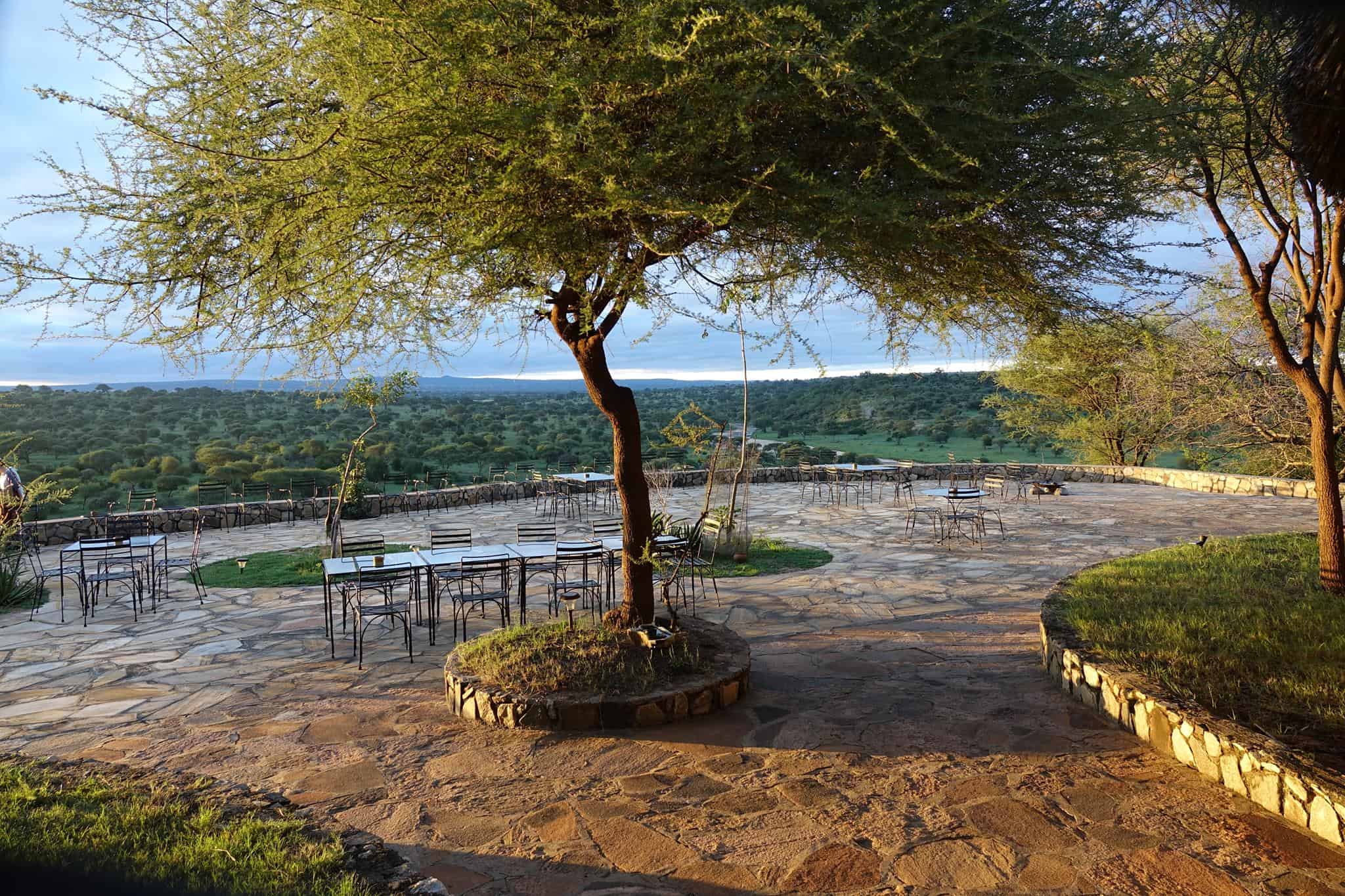
After an early breakfast we did a little early morning birding in the grounds of the lodge. I was pleased to find several Blue-eared Glossy Starlings present, the first being one stealing food from the breakfast table! There was also a family of very dapper Mocking Cliff Chats on the cabin rooftops and a first Mariqua Sunbird. We delayed our morning game drive in order to try and find out more about KLM flights as all information coming in is conflicting. At one point Anthony at Tanzania Birding and Beyond Safaris in Arusha had been told of flight cancellations, but still nothing on the KLM website or emails to us. I tried various phone numbers for KLM in Dar, none of which worked or connected. I then spoke to KLM in Arusha who had not heard of any cancellations and finally Anthony called to say that in fact there is supposed to be a flight on 23rd and only 1-2 flights cancelled on earlier dates. Even this last seems at odds with reality as Bill went online to see that there is indeed a flight from Schipol to KIA today – one of those supposedly cancelled! Anyway, we felt slightly more sanguine – or was it brow-beaten – and decided to forget all that stress and hassle for a while and go on our game drive.
Roger managed to get us right around the circuit to Silale Swamp, navigating some deep wet and muddy tracts of the route with his usual skill and care. As yesterday, there was not a great deal of big game to be seen; Lion footprints, a few Elephants and Giraffes and a lone Bohor Reedbuck. But the birding was very good with quite a few additions to the list. Northern Pied Babblers were seen on several occasions – our last babbler required. Both Common Scimitarbill and Green Woodhoopoe showed up well – again completing just about all that can be expected of that family. Black-faced Sandgrouse were dotted all the way along the sandy track we drove. Other star birds included lovely Golden-breasted Bunting and a very close (and not too often recorded) Buff-crested Bustard. Eagles were definitely a strong and exciting feature of the morning, with no less than 6 species all seen well: Tawny, a pair of fly-by Wahlberg’s, gorgeous adult African Hawk-Eagle, iconic African Fish Eagle, a monstrous great Martial Eagle sat in a tree at almost arms-length and finally a first Brown Snake Eagle. The big mystery is why there were virtually no water-birds present at a time of abundant water? Too much wetland available – “spoilt for choice” – seems
Jacanas were seen in split-second views by some of us, a couple of Comb Duck flew over and a very nonchalant Spur-winged Goose lounged on a large tree branch over the swamp: that was the sum total of water-birds!
We were back for a latish lunch at 1.15pm and took a break thereafter until 4pm. We set out again for a gentle meander and spent a good bit of time watching the Elephant herds by the side of the track. There was also time to get those definitive Baobab photos and admire arms-length Ostriches again. A few interesting birds were seen: further Mottled Spinetails around some baobabs, but the best being a nesting group of Golden-backed (Jackson’s) Weavers and at the same spot of flooded river plain a Dwarf Bittern. I’ve only seen this species a couple of times before and we had particularly good looks at this individual. First there was a rainbow. Then some magnificent dark blue skies giving a stunning deep and intense colour backdrop to the Lilac-breasted Rollers on top of the trees. Then there was thunder and finally an absolute deluge as we returned to the lodge by 6pm. The tracks became streams of fast-flowing muddy water and the rain poured off the rooves in unbelievable torrents.
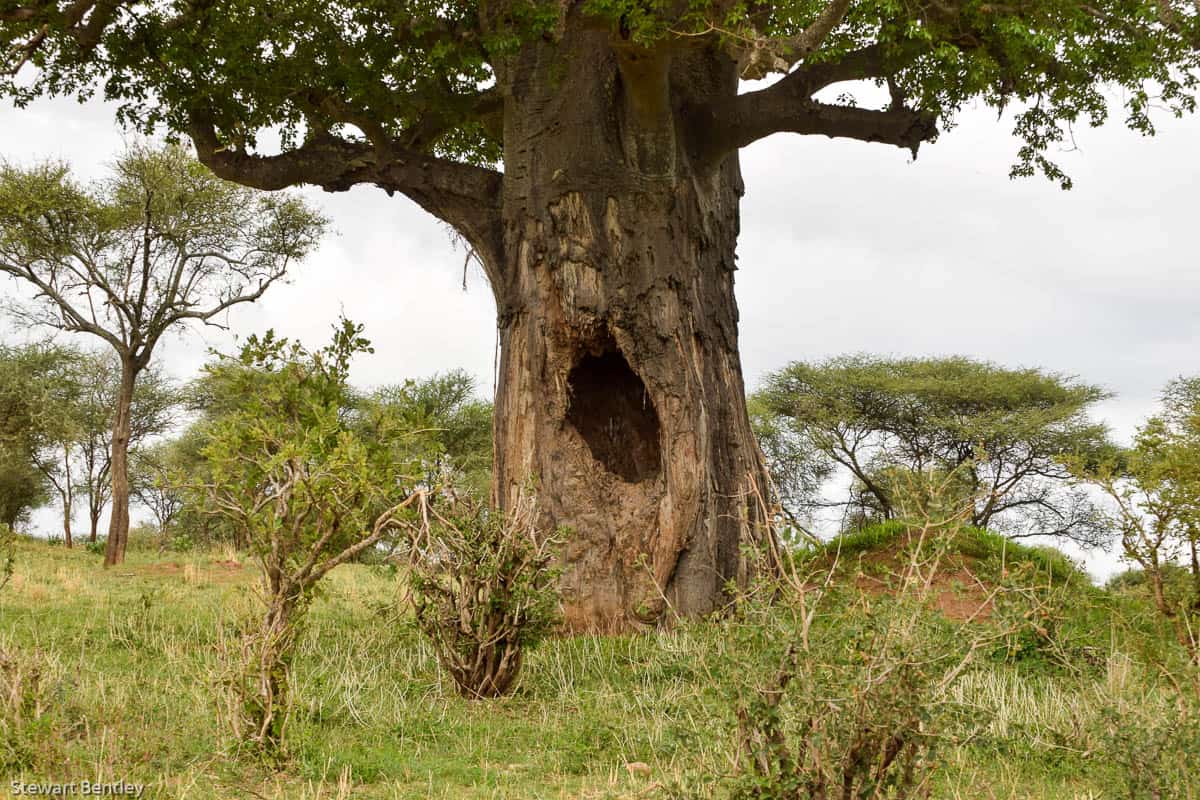
Just as we’d sort of decided to go to the end of our tour, we got together for breakfast at 7am and the uncertainty and stress levels about coronavirus rose again with a couple of received emails. Bill had one saying all US citizens should get back home “Now” not later. No specific details of whether borders might close or flights be banned, but enough to produce additional anxiety not knowing what was actually going on or imminently going to happen. I simultaneously received an email from KLM saying my flight to Glasgow from Amsterdam was cancelled and they couldn’t reschedule for me. The wording was ominous: “The local authorities of your destination have initiated entry restrictions, due to the outbreak of the coronavirus (COVID-19). At this moment, we are unable to rebook you, because it’s still unclear when these restrictions will be lifted”. But again, no factual explanations were forthcoming. Was Glasgow airport closing in a day or two? or was KLM to stop flying there? The wording strongly suggested that either Scotland was closing its borders or Glasgow Airport was shutting down, otherwise KLM would surely be able to re-book me on a later flight. We’d no idea, but it was enough to make us all extremely worried and me wonder how I would get back to UK and Islay from Amsterdam. We also heard from Anthony that half his group from USA had urgently rescheduled to go home early and had rebooked on Turkish Airlines. With an 8am departure from the lodge there was no time to start trying to re-arrange schedules and flights, but we resolved to do so as soon as we got to Cultural Heritage in Arusha at lunchtime.
It was sadly a rather subdued drive as we made our exit from Tarangire by 10.30am. Most noteworthy was the one turn off the main road that Roger decided to make where we found a landcruiser deeply stuck in a large muddy pool that used to be the track.
With there now being virtually no tourist vehicles left in the Park due to the coronavirus scare it was great serendipity that we made the turn and were able to pull him clear.
We had all reluctantly agreed that with all the uncertainty and over-reaction to the virus scare it was becoming increasingly difficult to enjoy the trip and we just all wanted to cut our losses and get home. Thus our arrival at Cultural Heritage by about midday was not the relaxed lunch and a look around the shops and art gallery that it should have been. It turned into a panicked and frustrating attempt by us all to start the awfully stressful business of trying to reschedule and get home early – all made much worse by the poor and intermittent internet connection. Bill and Denise could only get occasional connection getting them so far through the process and then cutting out. I was “lucky” – or was I? I managed to stay online long enough to be presented with two alternatives. The first was a departure via Nairobi tomorrow at a cost of over £1,000, or the more or less same thing later today for free. With internet coming and going and prices changing on a whim each time you got online, I had to grab at the free departure today, assuming that the others would be able eventually follow with something similar. Not so! I had changed my booking and was now committed as the original booking departing on 23rd was null and void. I needed to get to the airport for a 6.30pm flight and the others needed to get to the airport to see if they could reschedule there as they couldn’t get any further with rescheduling online at Cultural Heritage. It was all a horrible mess! Roger drove us to the airport, dropping me at KIA Lodge on the way, to pick up my left bag, repack and transfer to the airport where he’d taken the others in hope that they could fix up a new flight either today or tomorrow. I arrived and went in for what I thought would be a quick check-in after which I could get out and meet the others to find out what was developing. Unfortunately, despite a “confirmed” rescheduled flight they were very unsure at check-in and kept me on hold not knowing what was going on, for way over an hour before giving me the green light to travel. By this time Bill, Marsha, Denise and Roger were gone and I’d not even had time to say goodbye – and had no idea what their plight or plans were. Unbeknown to me they had gone to our scheduled accommodation at Ngare Sero Lodge for the night.
I eventually flew after long delays, to Nairobi, connecting after 4-5 hours with an overnight KLM flight to Amsterdam. Talking to the onboard staff, they all confirmed total confusion and things changing every minute. All very disconcerting.
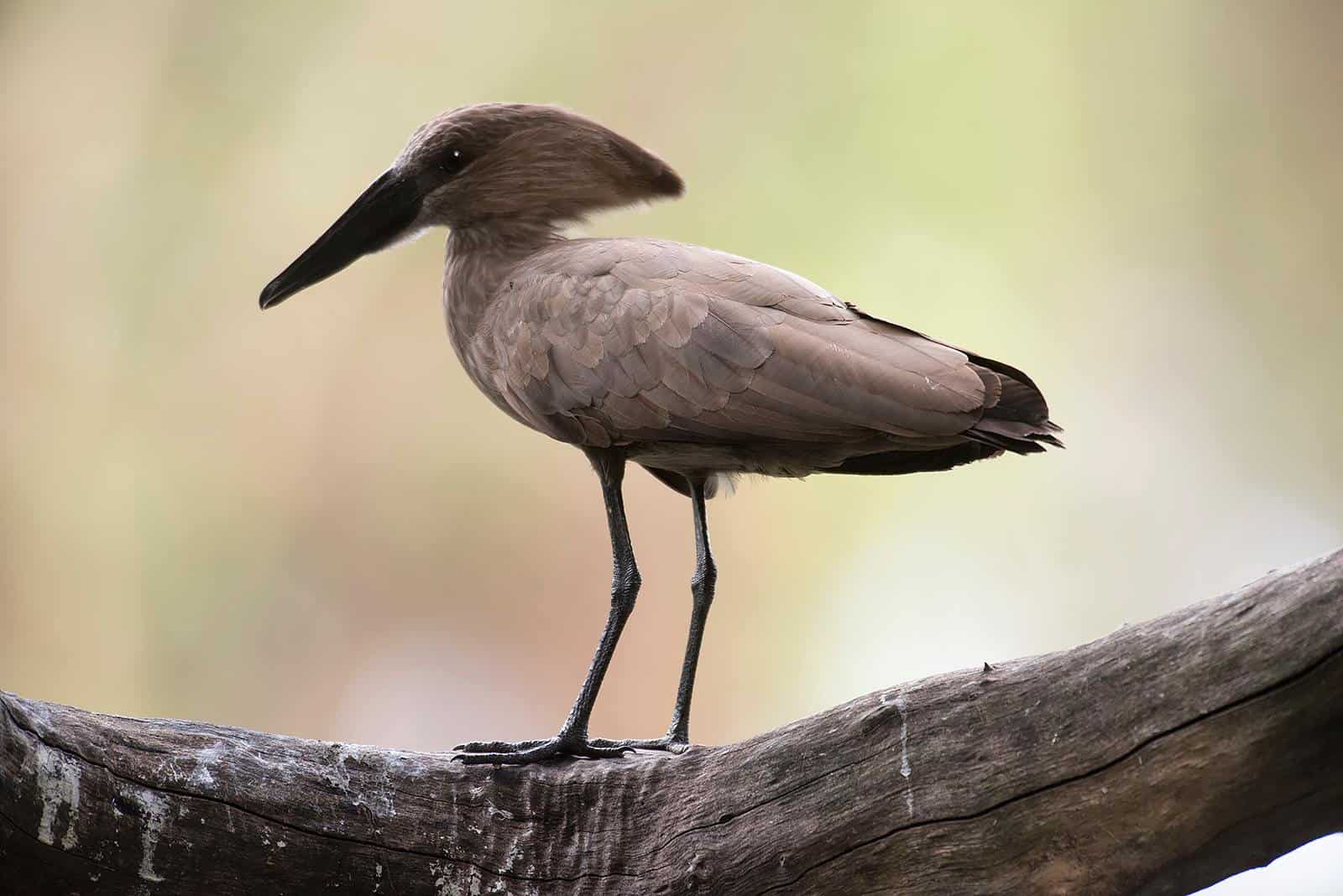
I arrived into Amsterdam at 6.30am where the confusion and incompetence continued. I had been given a 15 hour stop-over despite there being a 9.30am flight to Glasgow that could get me home today (assuming ferries and buses were still running). I specifically asked for my luggage to be checked through only to Amsterdam so that I might have a chance of changing to the 9.30am flight from the 9.30pm flight. I had a luggage tag saying this was the case, but the KLM agent’s computer said my luggage was tagged all the way through to Glasgow on the evening
flight. Despite the fact that they were going to charge me €145 to change the flight, I could no longer do it.
Stuck in the airport for 15 hours was fun! I tried getting messages to the group to find out what was going on at their end. Eventually messages to Anthony confirmed that they had abandoned all hope of getting out early and were back to being committed to staying the course and flying home on the still apparently confirmed evening KLM flight on the 23rd that we’d all booked in the first place.
They continued with the scheduled day in Arusha National Park. Driver roger took them on the “usual” route, first up the slopes of Mt. Meru (14,979 ft.) with thick forests of Mahogany, Fig, Cedar, and Wild Mango. Stopping at the famous Fig Tree Arch they tried for the special forest birds of this rich habitat. Hartlaub’s Turaco and the recently split Kilimanjaro White-eye were added along with a couple of new mammal species – Black-and-White Colobus Monkeys and Bush Duiker. After the forests in the morning, the circuit around the soda lake within the National Park was made. As Anthony had warned, this too was over-full with freshwater, producing a stark lack of the common and expected water-birds. However, from the notes provided, it seems they did manage to find birds of interest on the open grasslands – Lesser Swamp Warbler, Singing & Trilling Cisticolas, Steppe Eagle, African Black-headed Oriole, included.
The grounds of Ngare Sero lodge provided further interest at some point in the time spent there. The lovely little lake held the hoped-for Giant Kingfisher, African Black Duck, Mountain Wagtail, African and Taveta Golden Weavers and Grosbeak Weaver.
Meanwhile, I made it back to Glasgow late in the evening, took a taxi and stayed overnight with Roger Broad.
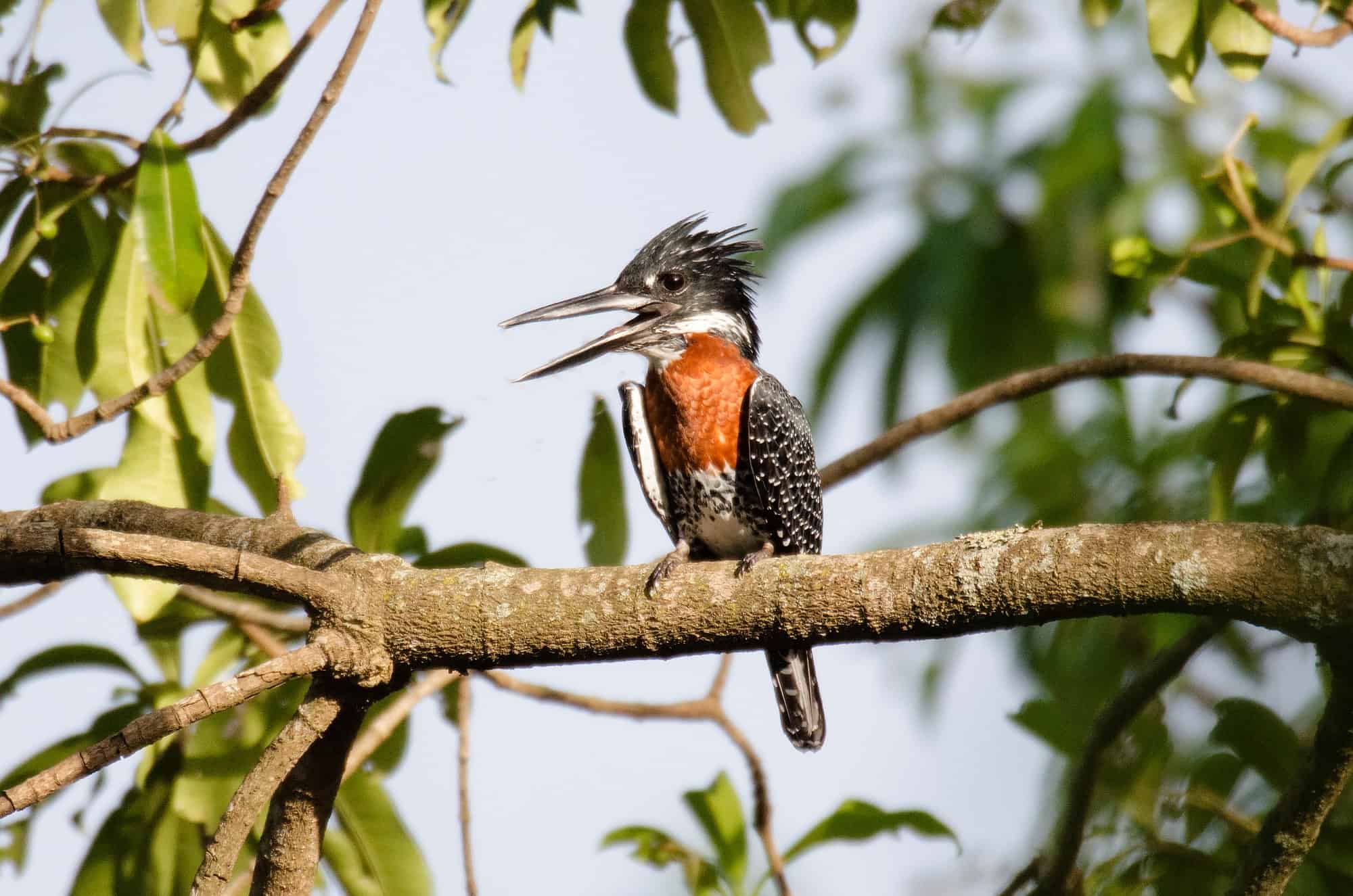
While I was kindly driven by Roger Broad to the ferry to Islay, arriving home in late afternoon, Roger, Denise, Bill & Marsha were setting out from Arusha this morning to Ndarakwai. They had decided not to bother with the hunt for Beesley’s Lark on the “Lark Plains”, but instead, going directly to Ndarakwai, further east towards Mt. Kilimanjaro. The fairly remote and secluded Ndarakwai Tented Lodge, on private land bordering close to Amboseli National Park in Kenya is the only place where it is possible to take a night drive on the tour. Happily, they hit the jackpot on their night-drive this evening with apparently good, close and long views of Aardvark – a species I’ve only seen 3 times
(two of them here at Ndarakwai). The unique and bizarre Spring Hares were also a big hit.
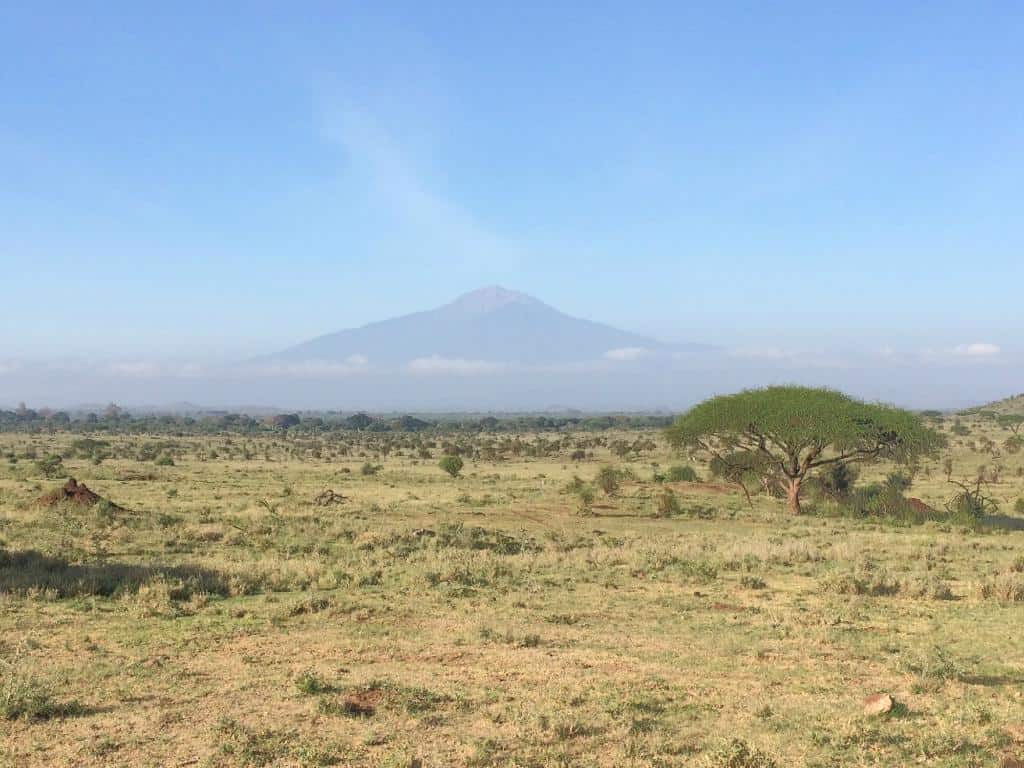
Further birds of interest while at Ndarakwai on a game drive this morning included first Spot-flanked and Brown-breasted Barbets, Ashy Flycatcher, Long-tailed Fiscal, Lesser Honeyguide, Yellow-mantled widowbird, Crimson-rumped Waxbill, Cutthroat, Black-and-White Mannikin and migrant Tree Pipit as well as further Bat-eared Foxes and a good selection of eagles.
After lunch the journey was made back to Kilimanjaro International Airport to see if the scheduled flights homeward on KLM were actually operating. They were! Apparently it was a bit of a scrum as many other people desperate to get home were trying to book onto the flight and it was of course packed to full capacity.
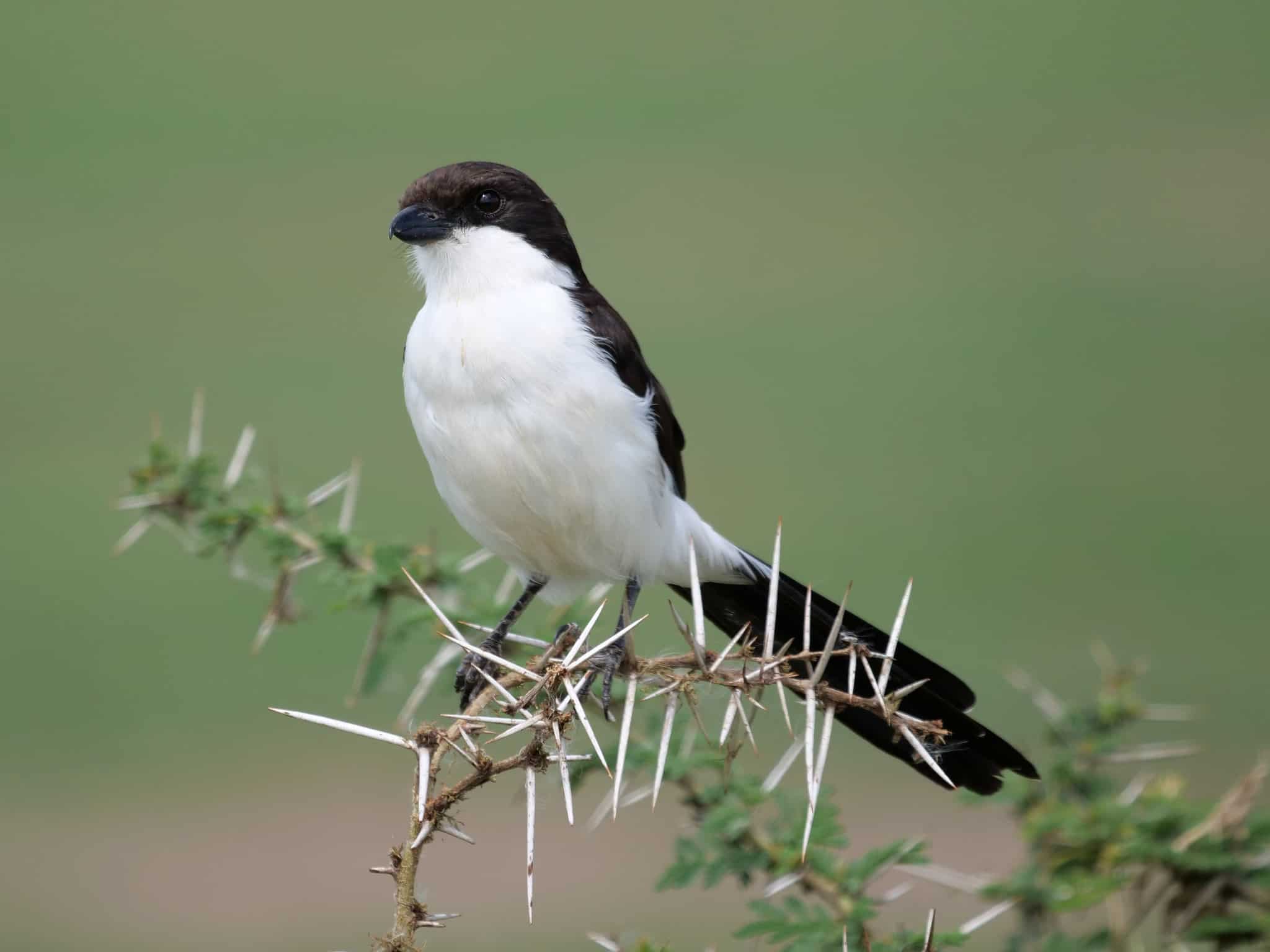
The onward connections to UK and USA went more or less according to plan, though with various uncertainties, small glitches and delays in some of them.
This will go down as one of the more memorable tours I’ve ever done to Tanzania, but not necessarily for all the good reasons! The country was beset by several months of exceptionally wet weather – reportedly raining on and off since October/November last year and the longest, wettest period on record for the past 35 years. This made for some very obvious differences in terms of what we saw and where we could go.
Breeding birds were generally very good – many species in full breeding plumage. Most baffling was the lack of water-birds – everywhere being waterlogged and lakes several times normal size meant, counter-intuitively, fewer wetland species – especially those specializing on saline, soda lakes which were now too “freshwater” for their own good. However a final tally of 408 bird species was, in reality, on par with many previous tours. There were some utterly baffling absences of species that I would have called virtually “guaranteed”, but then several seldom seen species filling these gaps and three species completely new to the list (Zebra Waxbill, Black-throated Barbet and African Crake) which is pretty good going after over 30 previous visits.
The exceptional rains had also created a rapid growth in lush vegetation so that some game animals became less obvious as they disappeared into tall grass. But all the major game animals such as Lions, Leopard, Cheetah, Rhino etc were seen – and some very well and doing all sorts of interesting things. Neither driver roger nor I had ever seen 2 Leopards or 2 Servals together (and Servals are only seen once in 5-6 tours at most). The sighting of Aardvark is always a very special event.
So from a wildlife aspect, it all worked out + / – OK. But it was the looming pandemic of the Coronavirus that really took the shine off everything. The news bulletins and emails with mixed messages, misinformation, scare-mongering, chaos and panic made for some very worrying and unsettling times towards the last week of the tour. This resulting in taking our focus at times off what should have been a brilliant time in a spectacular place as we tried to work out what was actually going on and what we should be doing about it. Ultimately it caused the last 3 days to disintegrate into a very regrettable mess with all of us trying to get home early and only myself managing to do it. Most galling is that, with hindsight, it was clear that staying on to the end was a perfectly workable option for us all. With proper, accurate facts and information available at the time we need not have worried and most importantly, I would have stayed knowing that not all flights to Glasgow had been cancelled and that it was possible for me to get home.

